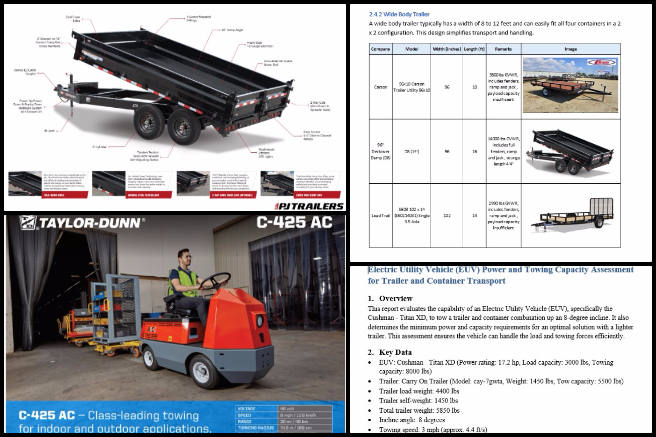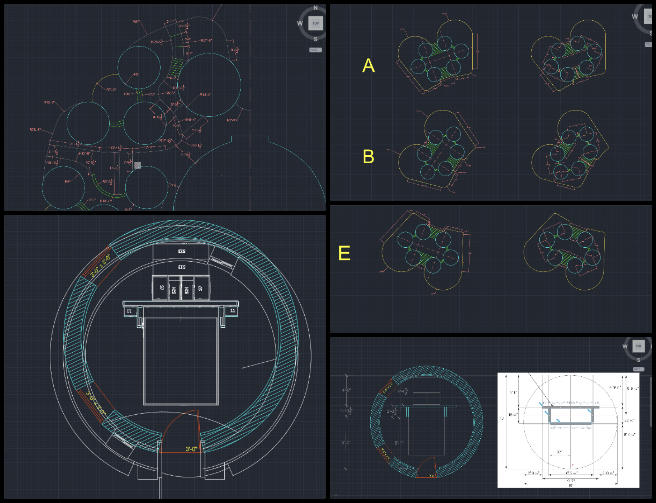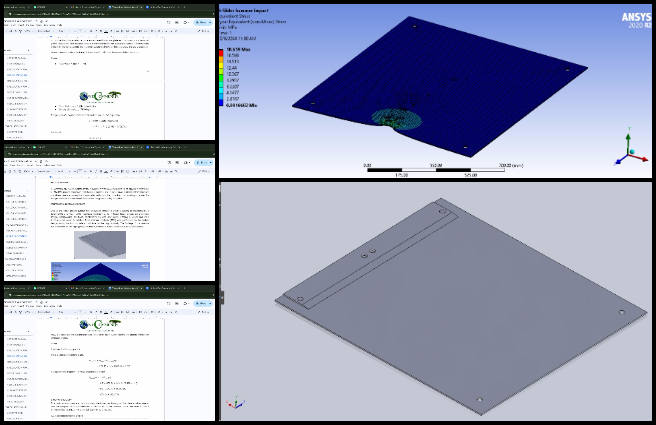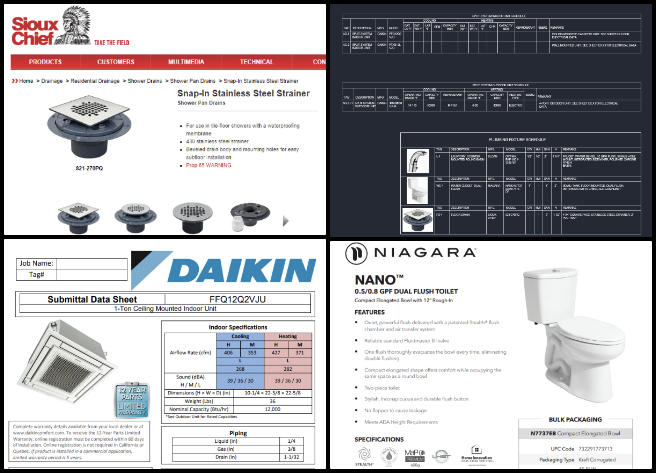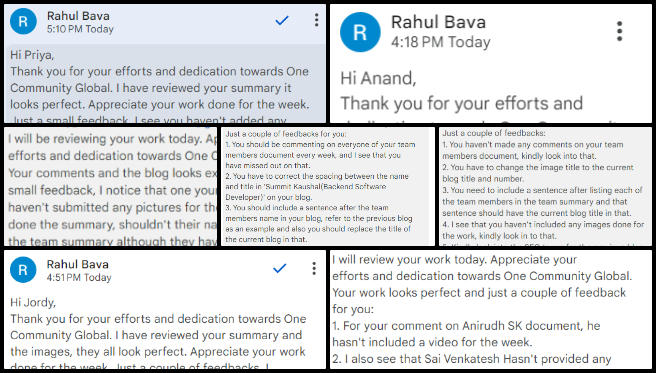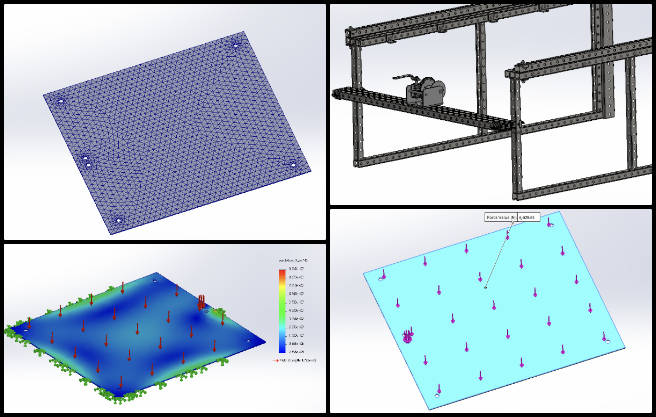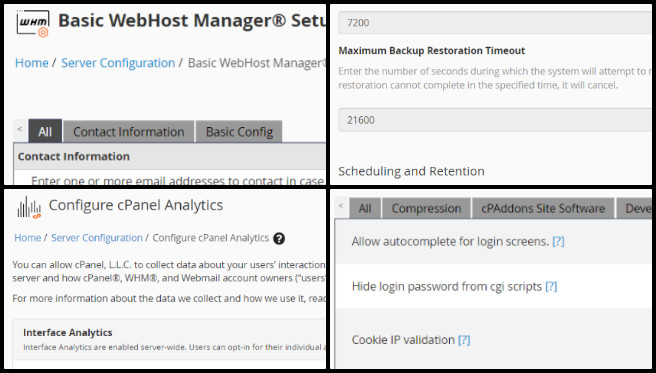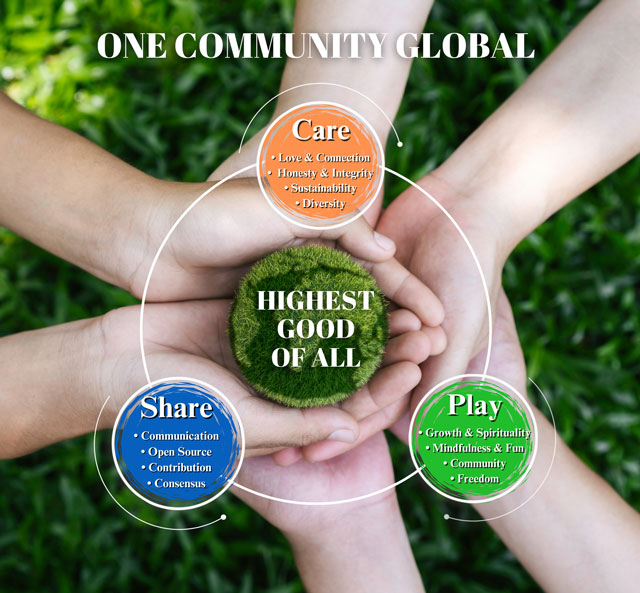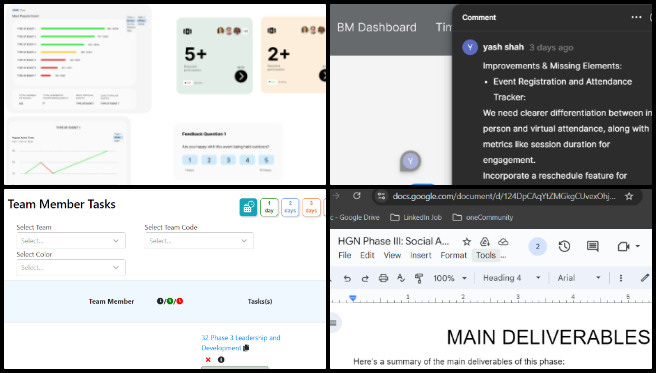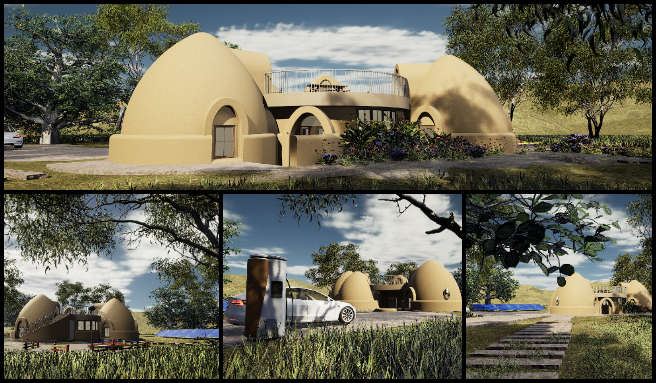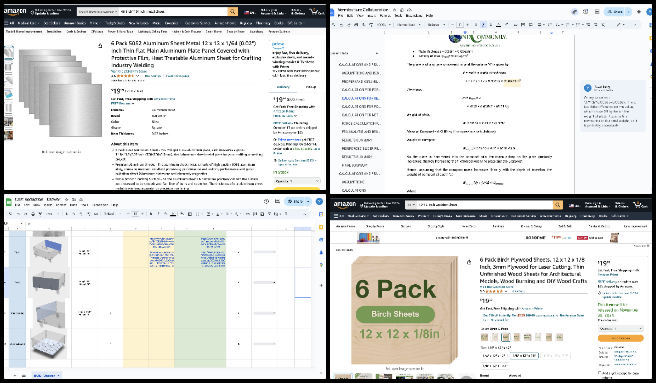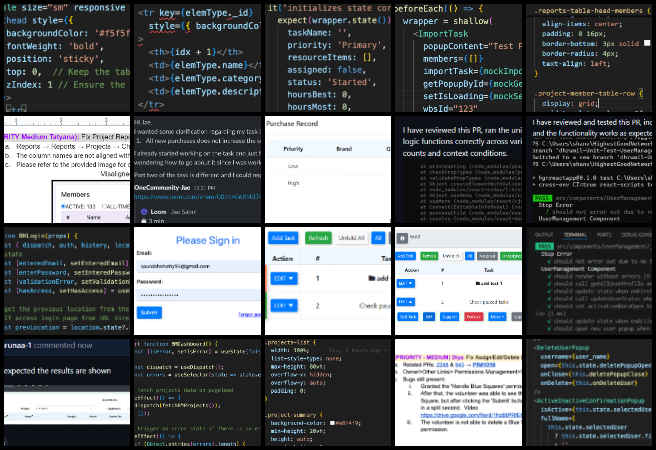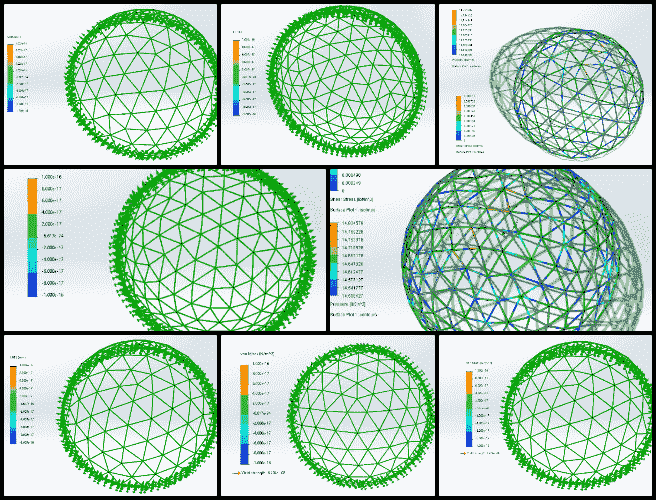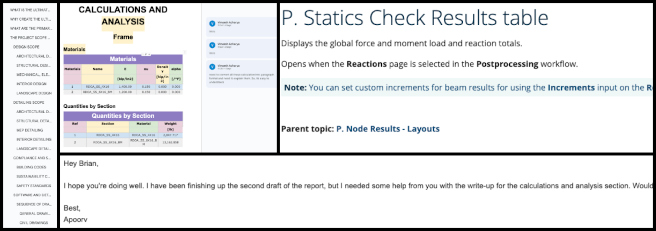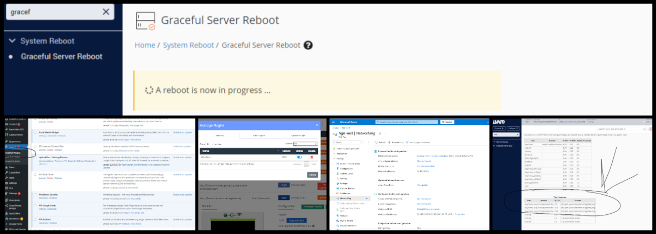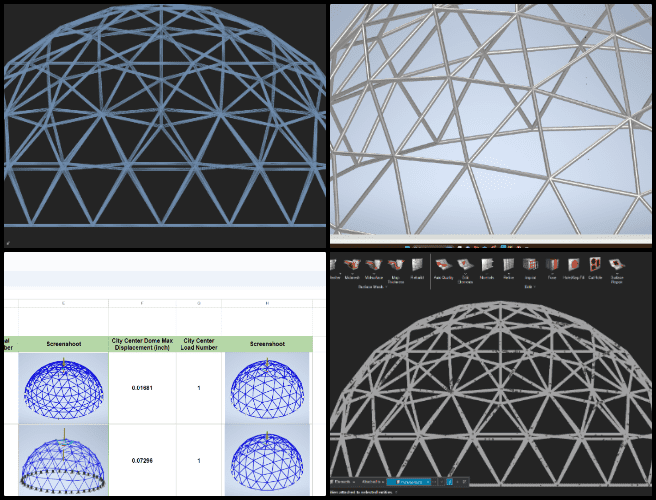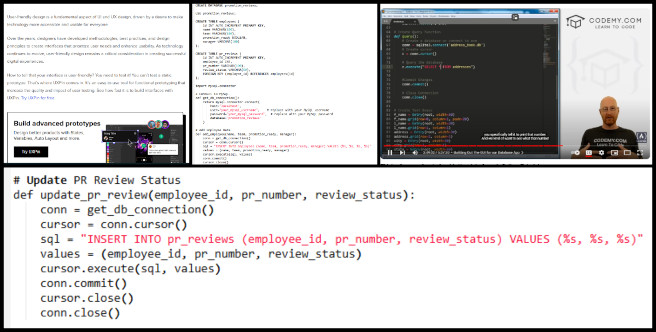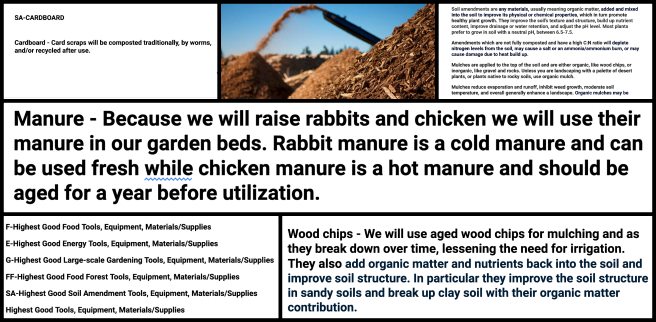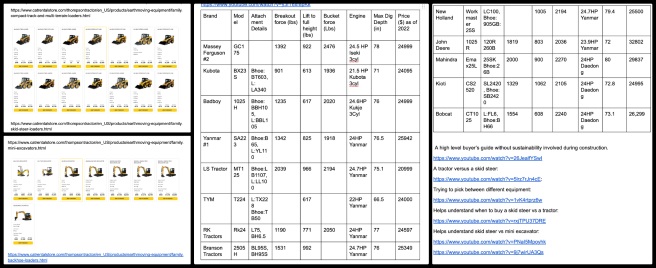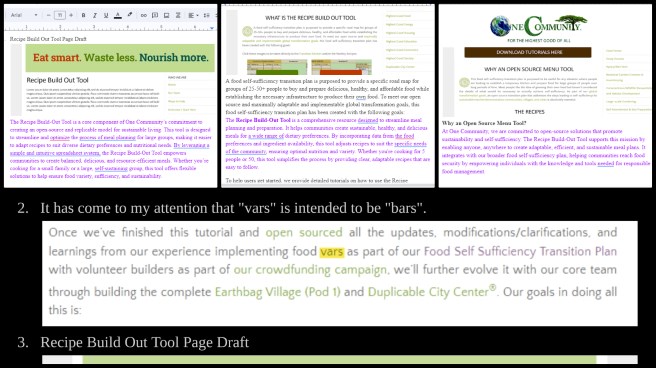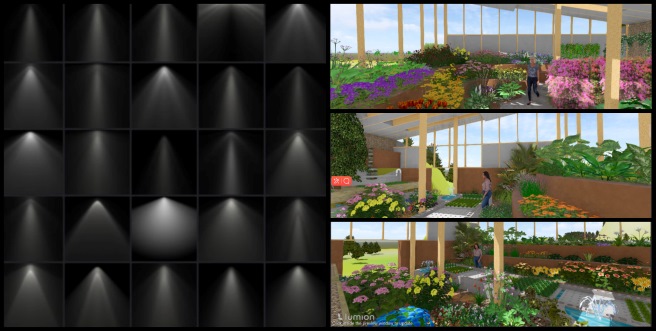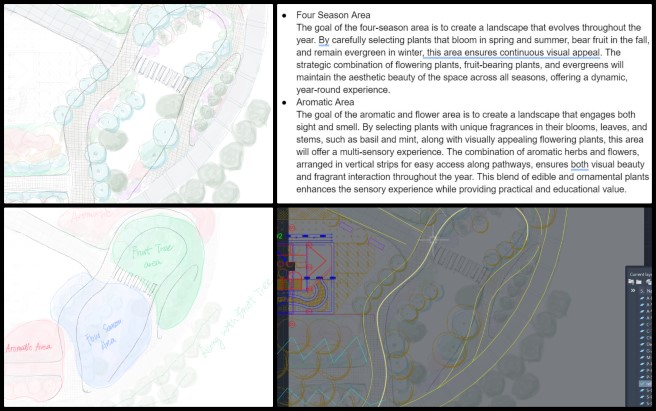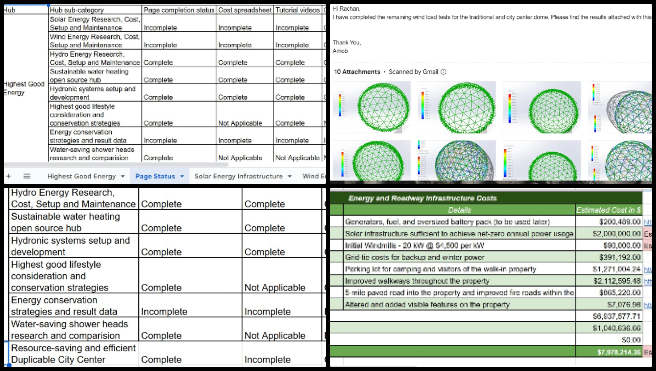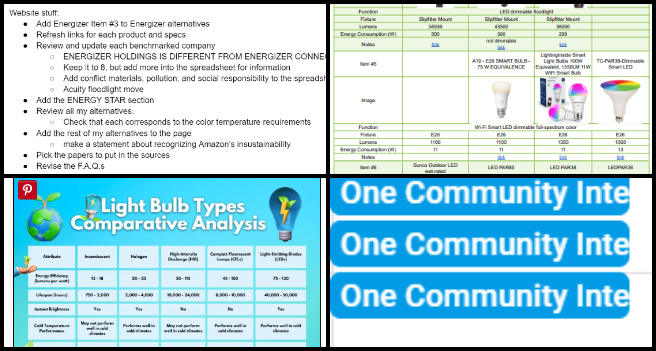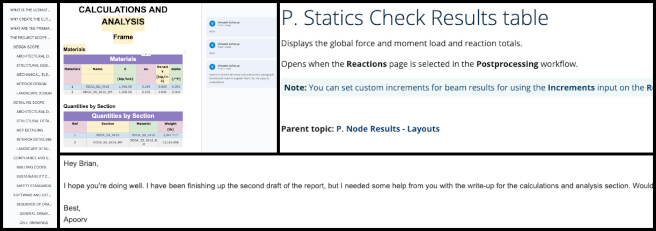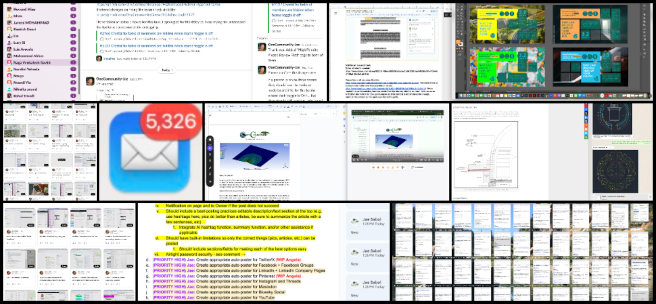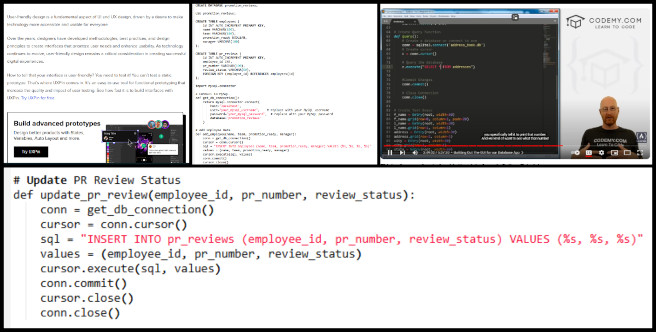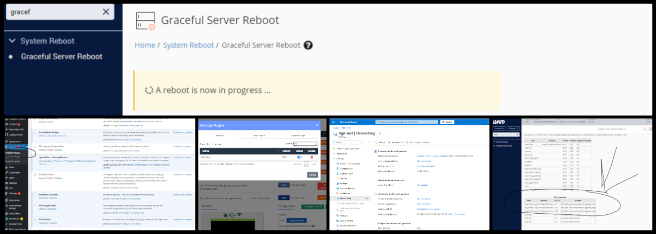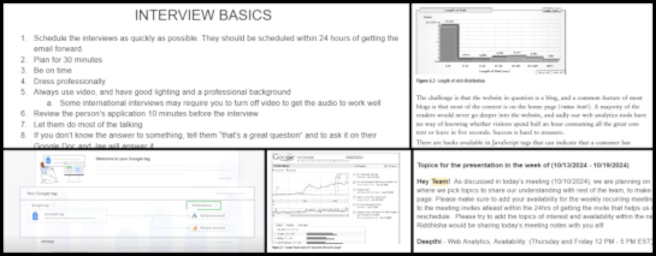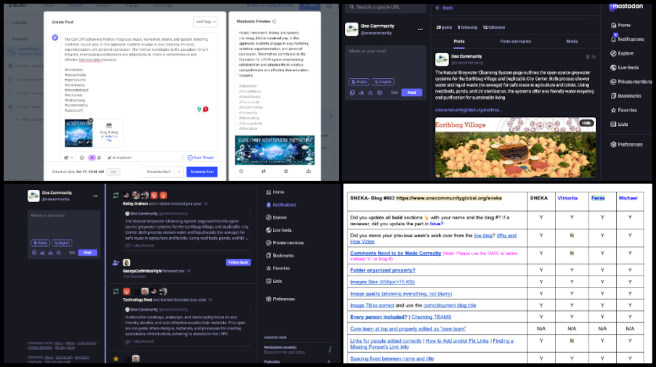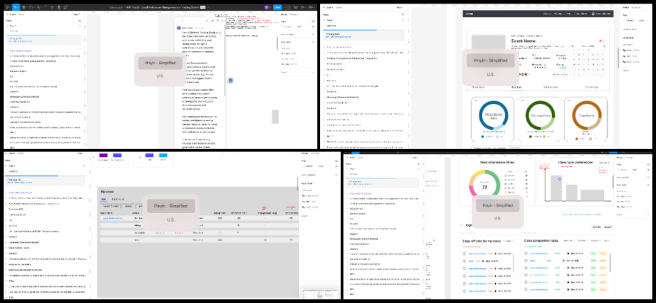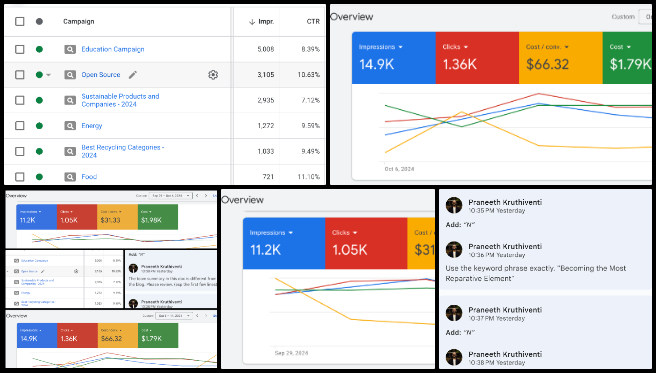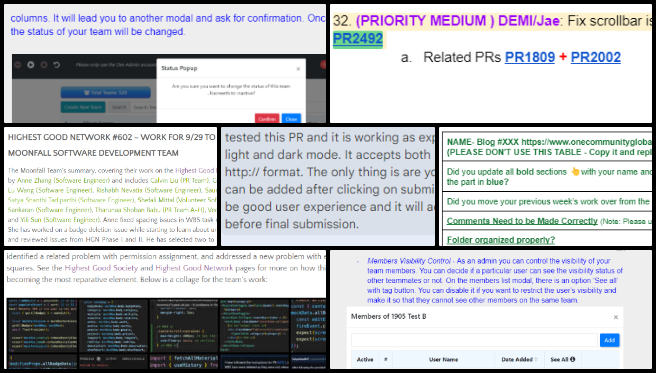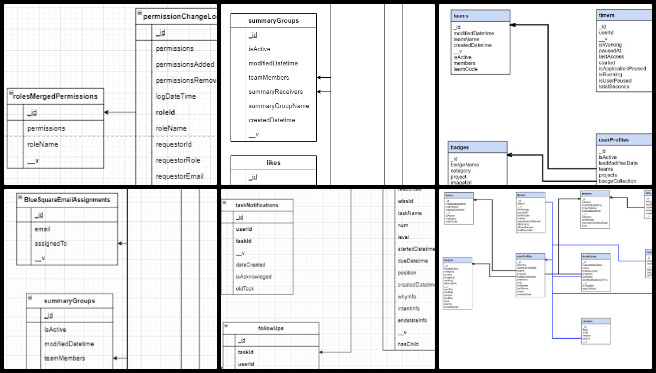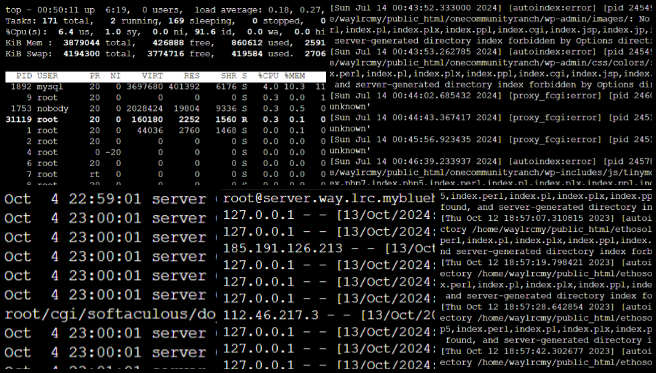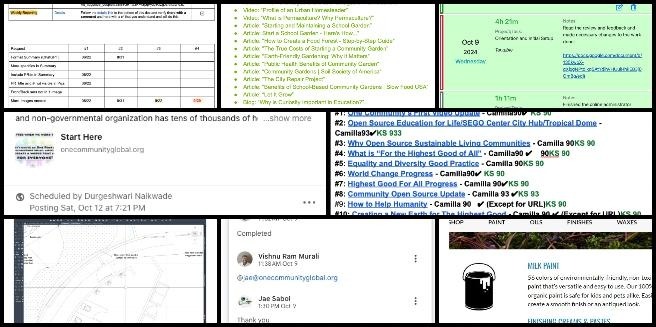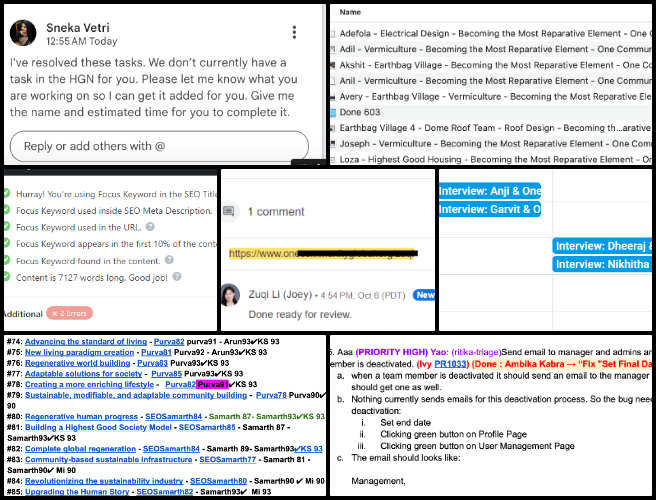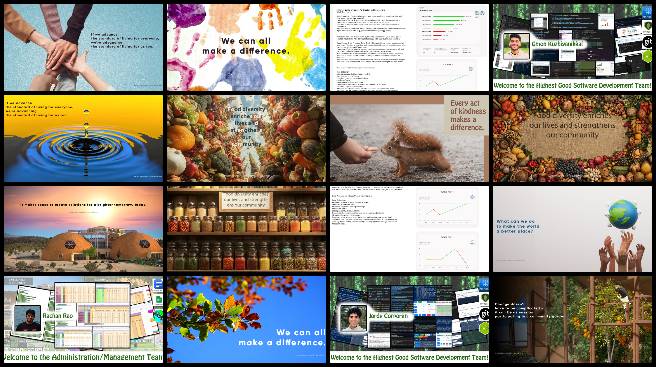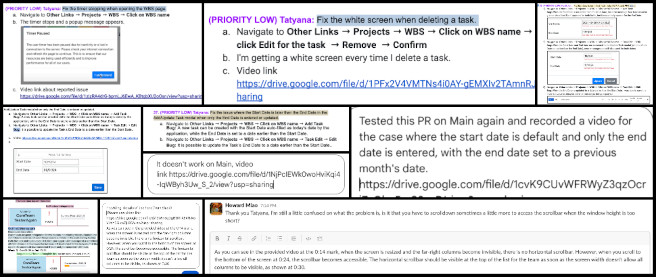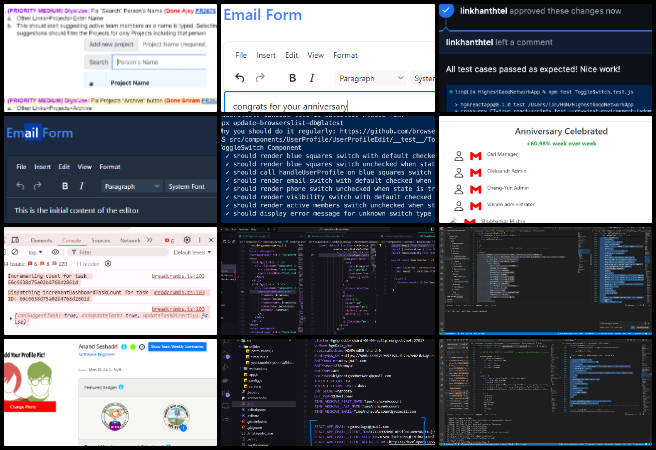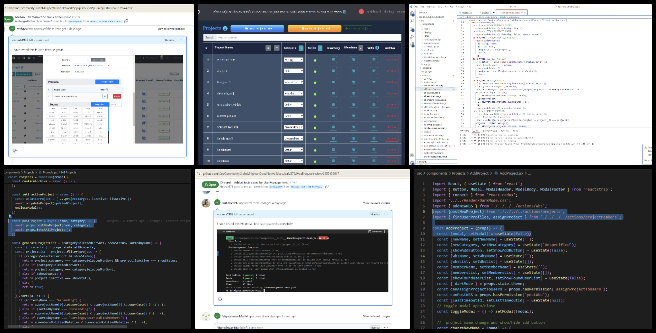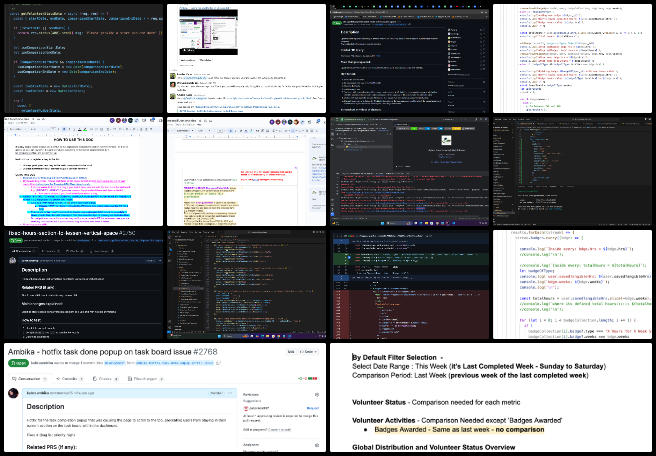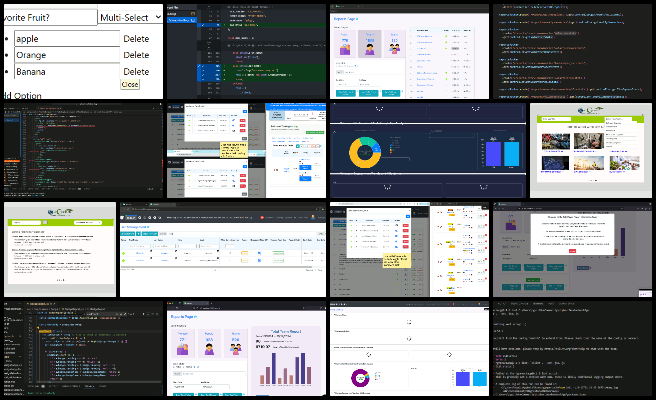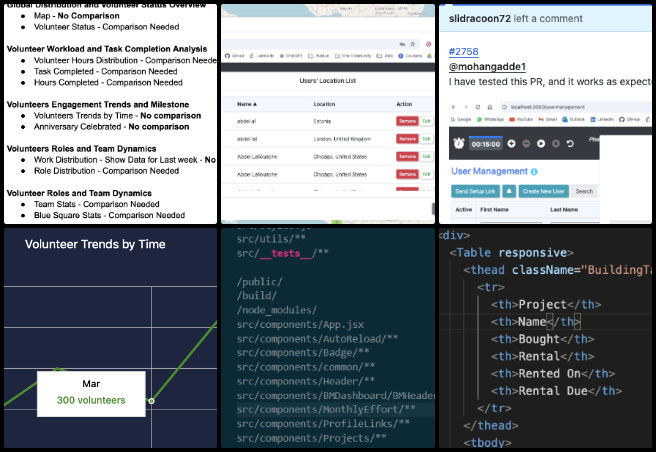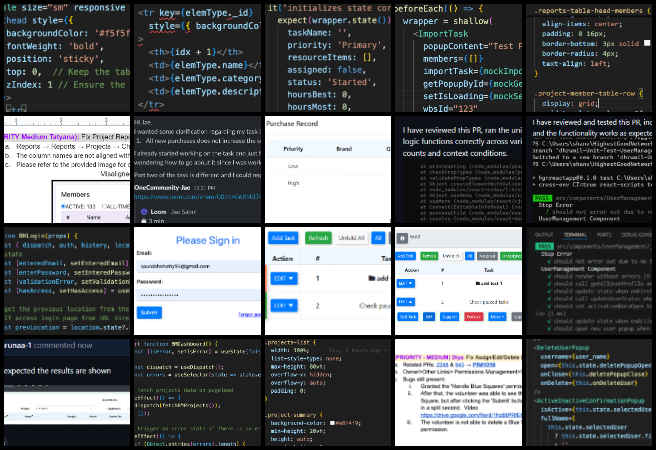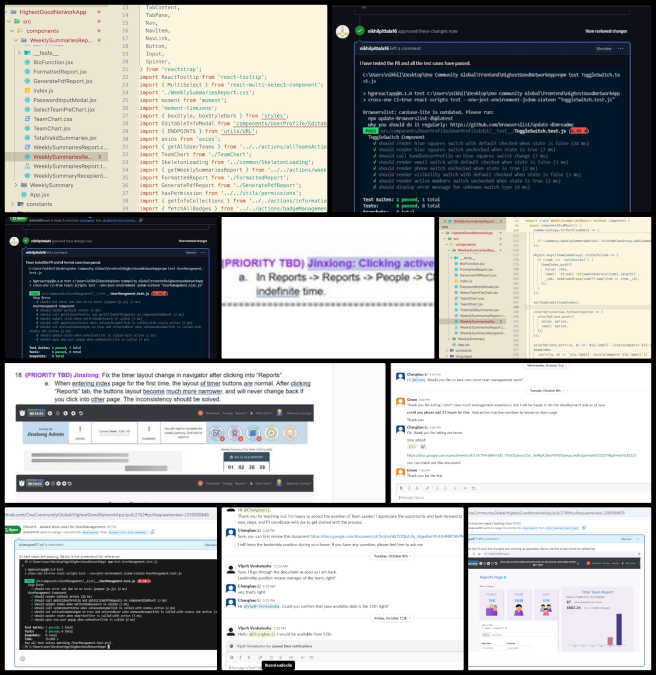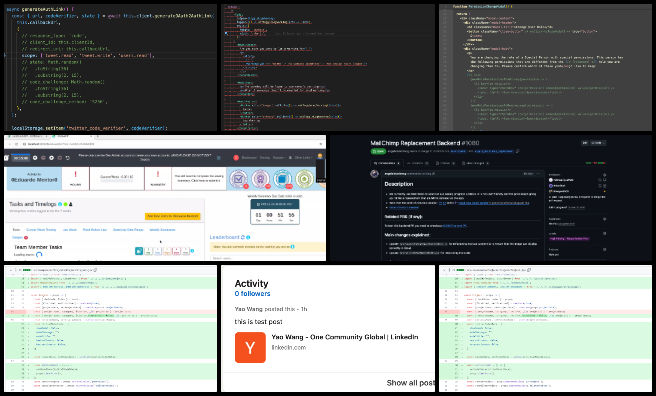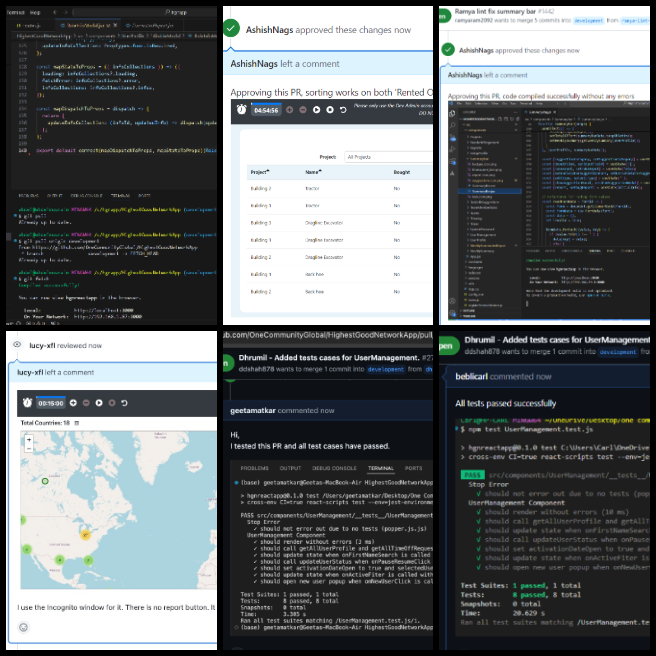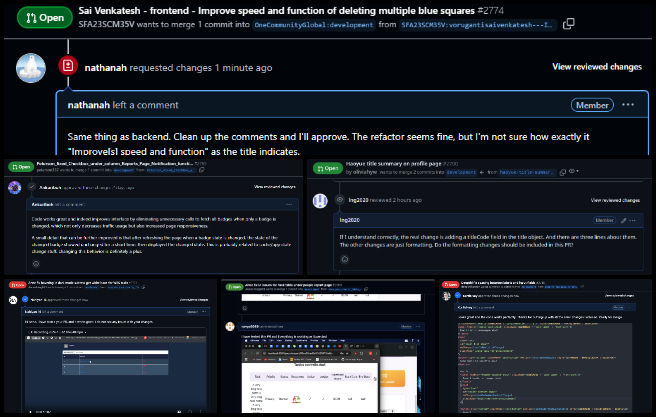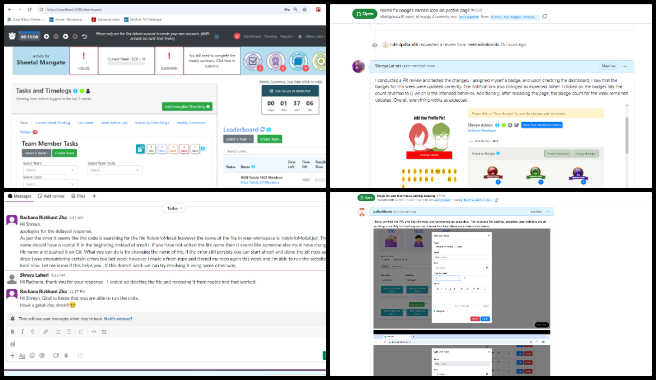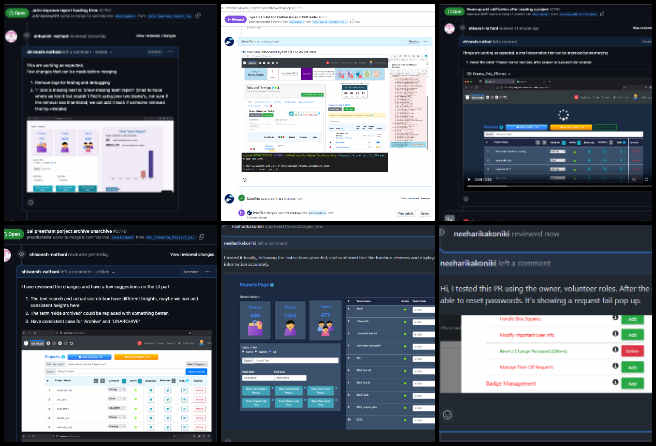Human Orchestrated Eco-abundance – One Community Weekly Progress Update #604
At One Community, we are designing human orchestrated eco-abundance to create a world that works for everyone. Our all-volunteer team is building a self-replicating model that integrates sustainable approaches to food, energy, housing, education, economics, and social architecture. By open sourcing and free sharing the entire process, we aim to foster a global collaboration of teacher/demonstration hubs, all for “The Highest Good of All.” Through these efforts, we are evolving sustainability, regenerating our planet, and inspiring fulfilled living for people everywhere.
- Here’s our project overview
- Here’s our world-change methodology
- Here’s how this becomes self-replicating
- Here’s how we are open source and free-sharing all the do-it-yourself designs

OUR MAIN OPEN SOURCE HUBS
Click on each icon to be taken to the corresponding Highest Good hub page.
One Community’s physical location will forward this movement as the first of many self-replicating teacher/demonstration communities, villages, and cities to be built around the world. This is the October 14th, 2024 edition (#604) of our weekly progress update detailing our team’s development and accomplishments:
Human Orchestrated Eco-abundance
One Community Progress Update #604
DONATE | COLLABORATE | HELP WITH LARGE-SCALE FUNDING
CLICK HERE IF YOU’D LIKE TO RECEIVE AN EMAIL EACH WEEK WHEN WE RELEASE A NEW UPDATE
YOU CAN ALSO JOIN US THROUGH SOCIAL MEDIA
ONE COMMUNITY WEEKLY UPDATE DETAILS
HIGHEST GOOD HOUSING PROGRESS
 One Community is designing human orchestrated eco-abundance through Highest Good housing that is artistic and beautiful, more affordable, more space efficient, lasts longer, DIY buildable, and constructed with healthy and sustainable materials:
One Community is designing human orchestrated eco-abundance through Highest Good housing that is artistic and beautiful, more affordable, more space efficient, lasts longer, DIY buildable, and constructed with healthy and sustainable materials:
- Learn about designing human orchestrated eco-abundance: Our Upcoming Crowdfunding Campaign
- Learn about the different village models: 7 Sustainable Village Models
- Visit the open source portals for the first two: Earthbag Village OS Hub | Straw Bale Village OS Hub
This week, Adil Zulfiquar (Engineer) continued working on the Vermiculture Toilet designs. A transportation report was compiled, addressing requirements, considerations, and the selection of equipment and accessories. The report evaluates supporting accessories for transportation, ensuring alignment with operational and safety standards. It details the selection process for an electric winch, focusing on technical specifications and performance. An analysis of trailer selection was also included, emphasizing load capacity, material handling, and safety compliance. A report on the selection of an Electric Utility Vehicle (EUV), covering specifications, load capacity, and compliance with industry standards, was submitted for review and approval. Additionally, calculations and finite element analysis (FEA) for hammer impact on the slider, prepared by Anil, were reviewed. The Earthbag Village is the first of 7 to be built as the housing component of One Community’s open source model for designing human orchestrated eco-abundance. See below for some of the pictures related to this work.
Akshit Sethi (Architectural Designer) continued working on finalizing the interior of the Earthbag Village 4-dome home design. Akshit worked on the AutoCAD file for The EarthBag Village, focusing on creating sets of external and internal clusters and detailed plans for walls and furniture placement within the domes. This involved updating the existing design of the Murphy bed dome and replacing it with revised plans to ensure accuracy and consistency throughout the project. The Earthbag village is the first of 7 villages to be built as part of One Community’s open source model for designing human orchestrated eco-abundance. See his work in the collage below.
Anil Karathra (Mechanical Engineer) continued working on the Vermiculture Toilet designs. He made the final changes to the vermiculture collaboration document based on recent feedback. The slider was redesigned to include reinforcements, and FEA was conducted on the updated design. Reviewing tasks were assigned to team members, and partial swing calculations were added to the document. Following further feedback, the document was revised again with additional reviewing tasks delegated. Research on ventilation and temperature control systems continued, and impact force was recalculated by reducing the swing distance to assess if the space under the toilet would be sufficient. The weekly team meeting was led, updates were provided, and team members were reminded of their action items. New FEA was performed on the slider using revised calculations, and the relevant documentation was updated. The approach for designing human orchestrated eco-abundance enables the development of innovative solutions that are both environmentally friendly and effective. See below for some of the pictures related to this work.
Avery Hamilton (Mechanical Designer) continued working on finalizing the interior of the Earthbag Village 4-dome home design. Avery selected HVAC equipment and modeled it in Revit. He addressed various modeling setup tasks and resolved related issues. Additionally, he selected plumbing fixtures and coordinated rough plumbing. The Revit model was updated and uploaded to the weekly collaboration folder. Avery also created plumbing fixture schedules and updated the mechanical plumbing schedule sheets. He completed the weekly summary and uploaded the necessary documents. The Earthbag village is the first of 7 villages to be built as part of One Community’s open source model for designing human orchestrated eco-abundance. See his work in the collage below.
Charles Gooley (Web Designer) continued working on the Aircrete Engineering and Research: Compression Testing, Mix Ratios, R-value, and More page. He worked on the Aircrete Engineering and Research: Compression Testing, Mix Ratios, R-value, and More page. His tasks involved resizing and posting multiple images, adding links to relevant videos, uploading several videos to YouTube, and embedding the necessary code into the webpage. The page details the engineering steps, research, resources, and tools used to verify the safety of aircrete designs and structures. Aircrete is an alternative we’re exploring for the Earthbag Village, a foundational part of One Community’s open-source model for designing human orchestrated eco-abundance. Take a look at some of this work in the images below.
Joseph Osayande (Mechanical Engineer) continued helping finish the Vermiculture Toilet engineering and design details. Joseph identified and documented changes affecting the Winch Removal System (WRS), such as an 8-inch increase in the drawer with wheels, which required modifications to the vertical unistruts. An additional FEA analysis was performed to assess any changes in stress or strain resulting from these adjustments. The steel insertion plate was also reviewed and cross-checked, confirming earlier observations made by a colleague. Additionally, reports were updated with new information obtained through research and formatted to meet the specified requirements. The Earthbag Village is the first of 7 to be built as the housing component of One Community’s open source model for designing human orchestrated eco-abundance. See some of his work in the collage below.
Prarthana Jathar (Architectural Designer) focused her work on the Earthbag Village project. She specifically worked on the 4-dome cluster roof design, section views, and related reports. She exported the Revit model to Rhino, created internal renders using TwinMotion, and participated in a weekly meeting to discuss task progress. Additionally, she worked on rendering internal views using Revit and Enscape and downloaded the necessary components for the renderings. The Earthbag Village is the first of 7 to be built as the housing component of One Community’s open source model for designing human orchestrated eco-abundance. Take a look at some of this work in the images below.
Vimarsh Acharya (Engineering Manager and Technical Reviewer) began working on the Most Sustainable Paints, Stains, Varnish, Sealers component. Vimarsh researched eco-friendly paint companies and identified three key brands: Pure Original USA, Green Planet Paint, and Clare Paint, with details submitted for further evaluation. Additionally, he began investigating eco-friendly primer companies to expand the scope of the research, aiming to gather relevant information on sustainable options within the paint industry. The One Community model of combining forward-thinking education with sustainably built classrooms like this is an excellent example of designing human orchestrated eco-abundance. See the collage below for his work.
Yagyansh Maheshwari (Mechanical Engineer) continued helping finish the Vermiculture Toilet engineering and design details. Yagyansh focused on optimizing the bolt length, reducing it to the minimum required specifications. Where applicable, the bolts were replaced with lock bolts for enhanced security. He also checked the fit of the drawer with the dome and conducted finite element analysis (FEA) on the drawer to evaluate its capacity to withstand both the weight and the pulling force exerted by the winch. The Earthbag Village is the first of 7 to be built as the housing component of One Community’s open source model for designing human orchestrated eco-abundance. See some of his work in the collage below.
Yuxing Xu (VFX Artist) continued working on making videos for the Earthbag Village 4-dome home design. Yuxing focused on refining details in the scene, including importing the Tesla charger stand model and improving the surrounding area of the building. He worked specifically on enhancing the ground surface to create a more natural appearance and improved the grass and foliage around the building. The week concluded with the export of videos for the flythrough visualization. The Earthbag Village is the first of 7 to be built as the housing component of One Community’s open source model for designing human orchestrated eco-abundance. See some of his work in the collage below.
Yuze Tang (Architect) continued working on Vermiculture Toilet designs. Yuze focused on two main tasks. The first task involved reviewing calculations made by Anil, which were shared in the team document. These calculations aimed to determine the resistance of a steel plate and compare the impact of a full swing of a hammer versus a partial swing. The calculations were clear and logical, with only minor typos and small calculation differences identified. The second task involved researching alternative materials for the frame structure of the drawer. Due to difficulties in finding a product with the exact dimensions of the drawer, a price comparison was conducted between aluminum sheets and wooden sheets. The results indicated that using wood as an alternative material would not reduce the cost of the drawer. The approach of designing human orchestrated eco-abundance enables the development of innovative solutions that are both environmentally friendly and effective. See below for some of the pictures related to this work.
EARTHBAG VILLAGE 4-DOME ROOF TEAM
The Earthbag Village 4-dome Roof Team was managed by Khushboo Parmar (Project Manager) and includes Karthik Pillai (Volunteer Mechanical Engineer) and Yusuf Thanawala (Structural Engineer). The Earthbag Village forms the basis of One Community’s open source model for designing human orchestrated eco-abundance. This week highlights key developments in the 4-Dome Roof Cluster project. Khushboo prepared and led a meeting to address potential blockers and propose solutions, managed various administrative tasks, and conducted research on Earthbag structures and environmentally sustainable materials. Additionally, she oversees the work of Michaela Silva, Adefola Madehin, Prarthana Jathar, and Avery Hamilton. Yusuf completed the analysis and design for the 4-Dome loft structure, worked on report sections, and reviewed previous calculations in Excel. He is also exploring construction plans for a typical wood loft. Karthik focused on the finite element analysis (FEA) of the pin in the vermiculture toilet waste dumping mechanism, working to finalize the pin dimensions and structure. He continued optimizing the Unistrut structure for the toilet design, aiming to complete this task soon. In the four-dome cluster project, Karthik designed and analyzed roof structures using SolidWorks Civil, planned design iterations for the roof and columns, and reviewed relevant engineering standards to ensure compliance. The Earthbag village is an integral part of One Community’s open source model for designing human orchestrated eco-abundance. See their work in the collage below.
DUPLICABLE CITY CENTER PROGRESS
 One Community is designing human orchestrated eco-abundance through a Duplicable and Sustainable City Center that is LEED Platinum certified/Sustainable, can feed 200 people at a time, provide laundry for over 300 people, is beautiful, spacious, and saves resources, money, and space:
One Community is designing human orchestrated eco-abundance through a Duplicable and Sustainable City Center that is LEED Platinum certified/Sustainable, can feed 200 people at a time, provide laundry for over 300 people, is beautiful, spacious, and saves resources, money, and space:
- Learn about this building and it’s function in designing human orchestrated eco-abundance: Duplicable City Center Open Source Hub
This week, Arnob Mutsuddi (Mechanical Engineer) continued working on Duplicable City Center structural engineering model and details. He worked on the flow simulation analysis on SolidWorks for 150 mph wind loads, which was completed, and a new analysis for 80 mph wind loads on the Traditional Dome structure was initiated and finished. Additionally, work began on the flow simulation analysis for 150 mph wind loads for the same structure, which was also completed. Assistance was provided to a new team member with a structural analysis task, and a team meeting was held. The Duplicable City Center is a foundational part of One Community’s open-source model, which excels in designing human orchestrated eco-abundance. This approach is integral to their mission of designing human orchestrated eco-abundance through innovative and scalable solutions. See some of this work in the pictures below.
Chris Blair (GIS Technician/Horticulturist) continued working with GIS data as part of One Community’s Permaculture Design that includes the location of the Duplicable City Center. He continued learning how to use QGIS, an open-source GIS software, with the goal of recreating his previous work from proprietary software to improve future access to the data. He completed the import of PDFs of the city center and villages into QGIS, georeferencing them to create raster data, and digitized both the structures and their footprints on the land. He also identified and marked discrepancies between the village sizes displayed on the website and those observed when scaling the blueprints in QGIS. Within One Community’s open-source framework, the Duplicable City Center plays a central role in designing human orchestrated eco-abundance. The images below showcase some of this work.
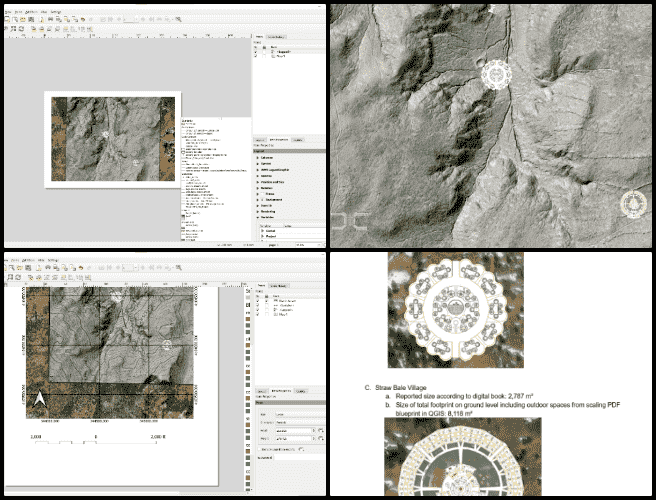
Faeq Abu Alia (Architectural Engineer) continued his work on the Duplicable City Center kitchen shelving and adding dry-storage food items. He focused on fixing the walkthrough video for room 3 using SketchUp and Lumion, while also working on the walkthrough videos for rooms 9, 10, and 11 using the same software. The tasks involved ensuring the visual quality of each video, making necessary adjustments to the design specifications, and addressing any issues during the rendering process. Faeq concentrated on refining the transitions and architectural details in each room’s walkthrough to maintain consistency and align with the overall project requirements. The Duplicable City Center represents a fundamental element of One Community’s open-source approach, dedicated to designing human orchestrated eco-abundance. View examples of this work in the pictures provided below.
Nika Gavran (Industrial Designer) continued her work on the Duplicable City Center dormer window installation plans. This week, Nika focused on expanding the final document for the dormer window instructions, with a specific emphasis on incorporating rock wool insulation. She removed shadows from the images, rerendered them, and arranged everything in a more appealing layout. Nika also added a materials section dedicated to the insulation. She is working towards compiling all the slides and will continue making progress in the coming weeks. As a foundational component of One Community’s open-source strategy, the Duplicable City Center is designed for designing human orchestrated eco-abundance. The images below showcase some of this work.
Tasmia Hasan (Design Engineer) continued her work on the structural engineering of the Duplicable City Center. This week, Tasmia focused on seismic load analysis for a structural frame. She reviewed previous research and used Autodesk Robot to perform several iterations of the analysis, ensuring it adhered to US seismic code requirements. Adjustments were made to the frame based on initial findings, but the results appeared inconsistent. As a result, she ran additional iterations in SolidWorks to refine the frame design and address potential issues with the load distribution or structural integrity. As a foundational component of One Community’s open-source strategy, the Duplicable City Center is designed for designing human orchestrated eco-abundance. You can see examples of this work in the below images.
Umema Ali (Mechanical Design Engineer) continued working on the Duplicable City Center Engineering. She worked on static structural analysis for both the new dome structure and the traditional dome structure, focusing on vertical load conditions. She used HyperWorks for the analysis and verification of results. Additionally, she performed Finite Element Analysis (FEA) for the same structures using Inventor and cross-checked the results in HyperWorks to ensure consistency and accuracy. Within One Community’s open-source framework, the Duplicable City Center plays a central role in designing human orchestrated eco-abundance. The images below showcase some of this work.
Yancong E (Architectural Designer) continued working on the Duplicable City Center project. This week, Yancong fixed issues in the AutoCAD files and added comments for the Social Dome and Dining Dome basements. He also addressed problems with the Room 12 model based on Jae’s suggestions, including adding a new roof and resolving a material issue with the mirrors in the bedroom and bathroom. The Duplicable City Center represents a fundamental element of One Community’s open-source approach, dedicated to designing human orchestrated eco-abundance. This innovative initiative aims to showcase how designing human orchestrated eco-abundance can transform urban spaces into more sustainable and community-oriented environments. You can see examples of this work in the images below.
HIGHEST GOOD FOOD PROGRESS
 One Community is designing human orchestrated eco-abundance through Highest Good food that is more diverse, more nutritious, locally grown and sustainable, and part of our open source botanical garden model to support and share bio-diversity:
One Community is designing human orchestrated eco-abundance through Highest Good food that is more diverse, more nutritious, locally grown and sustainable, and part of our open source botanical garden model to support and share bio-diversity:
- Learn about the structures: Hoop House Hub | Aquapini & Walipini Open Source Hub
- See what we’ll be growing and designing human orchestrated eco-abundance: Gardens & Hoop Houses | Large-scale Structures | Food Forest | TA
This week, the core team continued their research for the Highest Good Soil Amendment Tools, Equipment, Materials/Supplies list. Their focus centered on identifying specific soil amendments to enhance soil structure, fertility, and nutritional content. Potential additions included organic matter sources like leaves, compost, cardboard, organic food scraps, chicken manure, rabbit manure, comfrey, woodchips, and weeds. The Highest Good Food initiative is a key component of One Community’s open source plans, dedicated to designing human orchestrated eco-abundance. See their work in the collage below.
Surya Teja Anumolu (Volunteer Mechanical Engineer) continued his work on the Highest Good Food most sustainable construction and agricultural equipment. He focused on identifying the best equipment for excavating Aquapini and Walipini Planting and Harvesting structures. He developed an initial framework centered on three key factors: the volume of soil to be excavated, the time required for completion, and the associated costs. The Walipini excavation was estimated to require 12,000 cubic feet of soil removal, with a timeline ranging from one to six months depending on the equipment and manpower involved. To gather insights on budgeting and resources, Surya engaged with three construction equipment dealers, contractors, and rental service providers. The Highest Good Food initiative is a key component of One Community’s open source plans, dedicated to designing human orchestrated eco-abundance. This approach is critical to designing human orchestrated eco-abundance and ensures alignment with the initiative’s goals. See his work in the collage below.
Syahrina Maulida Majid (Volunteer Nutritionist) started working on create menu implementation tutorials as a part of One Community’s Transition Food Self-Sufficiency Plan. Her work involved drafting page content for the Recipe Build-Out Tool and reviewing the master menu template to ensure all necessary resources and details were there. This included checking for consistency with One Community’s existing style and ensuring that the structure aligned with the broader food self-sufficiency transition plan. Additionally, any corrections, comments, or necessary updates were documented clearly in a shared Google Doc for ease of communication with the team. The focus was on creating a clear and informative layout that outlined the tool’s purpose and available resources, maintaining alignment with the project’s objectives. The Highest Good Food initiative plays a crucial role in One Community’s open-source plans, aiming to design human orchestrated eco-abundance. Her work is showcased in the collage below.
Xuanjun Liu (Landscape Designer) continued working on the Cloud Forest House Zenapini renderings in Lumion. The process included further searching for corresponding plant materials in the Lumion plant library or online resources, and conducting preliminary tests on their appearance. Additionally, the preliminary tests on lighting materials and their performance were conducted in Lumion. Parts of initially tested plants were placed into the site and arranged in dense, reasonable groupings. Furthermore, parts of figures, water features, and effects were added. Highest Good Food is key to designing human orchestrated eco-abundance within One Community’s open source plans. See some of this work in the pictures below.
Ziyi Chen (Landscape Designer) continued working on the design of the outdoor spaces for the Aquapini and Walipini Planting and Harvesting structures. She finalized the zoning and transferred the sketch into CAD to start preparing the detail drawings. The aromatic area, which primarily consists of small trees, shrubs, and flowering ground covers to enhance interaction with people, was placed south of the food structure to minimize shading of the trees during winter. Similar considerations were applied to the northern section of the overall design area. The Highest Good Food initiative is a key component of One Community’s open source plans, dedicated to designing human orchestrated eco-abundance. See her work in the collage below.
HIGHEST GOOD ENERGY PROGRESS
 One Community is designing human orchestrated eco-abundance through Highest Good energy that is more sustainable, resilient, supports self-sufficiency and includes solar, wind, hydro and more:
One Community is designing human orchestrated eco-abundance through Highest Good energy that is more sustainable, resilient, supports self-sufficiency and includes solar, wind, hydro and more:
- Learn about the open source sustainable-energy foundations: Solar, Hydro, and Wind
- Explore our research into the most sustainable products and companies for saving water and energy: Insulation, Eco-laundry, Lightbulbs and Light Bulb Companies, Doors and Door Companies, Windows and Window Companies, Toilets, Faucets and Faucet Accessories, Urinals, and more.
This week, Panambur Rachan Rao (Project Manager) completed the Highest Good energy site status task and reviewed the cost spreadsheet p1d, as well as the cost spreadsheets on the HGE pages. Any deficiencies were documented on the spreadsheet available through One Community. Rachan also coordinated with the DCC analysis team to provide guidance on their upcoming tasks and to receive an update on their weekly progress. Within One Community’s open-source framework, the Duplicable City Center plays a central role in designing human orchestrated eco-abundance. Take a look at some of this work in the images below.
Viktoriia Zakharova (Administrative Assistant) worked on finalizing the web page layout for the sustainable light bulb guide on One Community’s website. She revised the DCC lightbulb alternatives table, incorporating various light bulb options, pictures, and links. She also updated the light bulb types comparison graphic and added content about the importance of sustainable lighting. A plan was outlined detailing the remaining steps needed to complete the web page. Vika interviewed three volunteer candidates, discussed their professional goals, provided feedback, and helped prepare them to start. Additionally, she reviewed the training process for a new administrative assistant. The Duplicable City Center represents a fundamental element of One Community’s open-source approach, dedicated to designing human orchestrated eco-abundance. View examples of this work in the pictures provided below.
Yi-Ju Lien (Environmental Engineer) updated the content on Hydro Power/Energy Setup and Maintenance, to ensure all resources are accessible. She revised the DIY TROMPE tutorial by incorporating a report that compares the performance of different pipe sizes and added a YouTube video to clarify the steps and processes involved in making the trompe. Additionally, she worked on the economic analysis of the hydro energy project and introduced the concept of Levelized Cost of Energy (LCOE), an index used to evaluate project profitability. Within One Community’s open-source framework, the Duplicable City Center plays a central role in designing human orchestrated eco-abundance. Take a look at some of this work in the images below.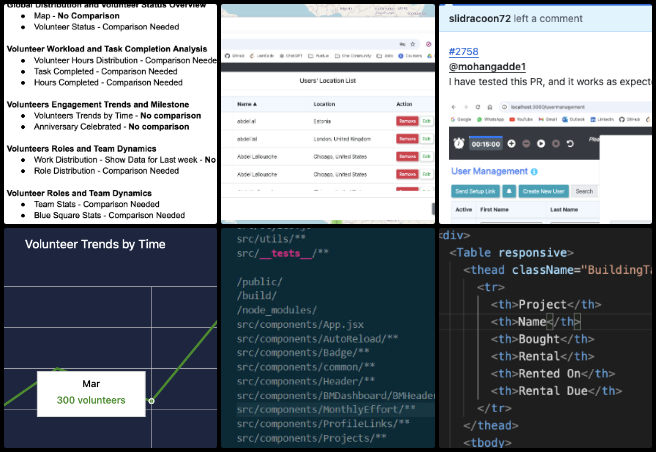
HIGHEST GOOD EDUCATION PROGRESS
 One Community is designing human orchestrated eco-abundance through Highest Good education that is for all ages, applicable in any environment, adaptable to individual needs, far exceeds traditional education standards, and more fun for both the teachers and the students. This component of One Community is about 95% complete with only the Open Source School Licensing and Ultimate Classroom construction and assembly details remaining to be finished. With over 8 years of work invested in the process, the sections below are all complete until we move onto the property and continue the development and open sourcing process with teachers and students – a development process that is built directly into the structure of the education program and everything else we’re creating too:
One Community is designing human orchestrated eco-abundance through Highest Good education that is for all ages, applicable in any environment, adaptable to individual needs, far exceeds traditional education standards, and more fun for both the teachers and the students. This component of One Community is about 95% complete with only the Open Source School Licensing and Ultimate Classroom construction and assembly details remaining to be finished. With over 8 years of work invested in the process, the sections below are all complete until we move onto the property and continue the development and open sourcing process with teachers and students – a development process that is built directly into the structure of the education program and everything else we’re creating too:
- Program Overview: Education Open Source Hub
- How the components work together in designing human orchestrated eco-abundance: How to use the Education for Life Program
- Lesson Plans for Life – Lesson Plans How-to
- Foundations of Outstanding Leaders, Teachers, and Communicators
- Curriculum for Life
- Teaching Strategies for Life
- Learning Tools and Toys for Life
- Evaluation and Evolution
This week, Apoorv Pandey (Mechanical Engineer) continued helping with the engineering details for the Ultimate Classroom part of the Highest Good education component. He continued working on the final draft of the Structural Engineering Report for the Ultimate Classroom Project, concentrating on the calculations and analysis section. Due to the complexity of the results, he is seeking assistance from his senior engineer, Brian Muigai Mwaniki (Structural Engineer) to complete the report. He did additional research to enhance the clarity and articulation of specific sections and referenced other published pages on One Community’s website to guide his work. The One Community model of combining forward-thinking education with sustainably built classrooms like this is an excellent example of designing human orchestrated eco-abundance. This approach exemplifies designing human orchestrated eco-abundance by creating environments fostering collaboration and innovation. See the collage below for his work.
Brian Mwoyowatidi (Graduate Structural Engineer) continued helping with the engineering details for the Ultimate Classroom part of the Highest Good education component. He continued on the Engineering Report and Tutorial for the Ultimate Classroom, adding introductory paragraphs to several sections, including the Material Selection for the Flooring Type. He also included brief explanatory paragraphs for the AutoCAD drawing illustrations of the Footer, Foundation, and Flooring system. Brian formatted all AutoCAD drawing headings to H6 and researched OSHA Trench and Excavation Safety Guidelines, backing them up in PDF format on Dropbox and adding reference links in the report. Additionally, he included images showing the curing process and formwork for the slab-on-grade. The One Community model of combining forward-thinking education with sustainably built classrooms like this is an excellent example of designing human orchestrated eco-abundance. This approach exemplifies designing human orchestrated eco-abundance by creating environments fostering collaboration and innovation. See the collage below for his work.
HIGHEST GOOD SOCIETY PROGRESS
 One Community is designing human orchestrated eco-abundance through a Highest Good society approach to living that is founded on fulfilled living, the study of meeting human needs, Community, and making a difference in the world:
One Community is designing human orchestrated eco-abundance through a Highest Good society approach to living that is founded on fulfilled living, the study of meeting human needs, Community, and making a difference in the world:
- Read the Highest Good society overview: Highest Good Society
- Learn about the model for fulfilled living and sharing: A Day in the Life
- Learn about the 4 economic models: RBE | For-profit | Non-profit | Entrepreneurship
- Learn about our open source community collaboration and management software: The Highest Good Network
This week, the core team completed over 64 hours managing One Community’s volunteer-work review not included above, emails, social media accounts, web development, new bug identification and bug-fix integration for the Highest Good Network software, and interviewing and getting set up new volunteer team members. They also shot and incorporated the video above that talks about designing human orchestrated eco-abundance and how designing human orchestrated eco-abundance is a foundation of the bigger picture of everything One Community is doing. The image below shows some of this work.
Anoushka Hazari (Data Analyst) did extensive research on optimizing and streamlining the logging process to enhance efficiency. After evaluating various options, she decided to implement MySQL to automate workflows related to promotions and reviews. Following the guidance of YouTube tutorials, she set up MySQL and connected it to Python, allowing her to begin building the solution effectively. In addition to her technical work, Anoushka addressed Sara’s comment regarding Fangle and promptly completed the fix for page 603 as requested. This work helps One Community’s mission of designing human orchestrated eco-abundance and reinforces our commitment to designing human orchestrated eco-abundance. The below images show her work for the week.
Aravind Yuvraj (Networks and Security Engineer) is in the process of migrating the Highest Good Network website to Bluehost. This involves reading the Bluehost knowledge base to understand the migration process and contacting their team for configuration details. He has also been exploring the Bluehost panel to gather statistics and check Azure resources. Additionally, he contacted the Bluehost team regarding slowness issues with the Onecommunityglobal website and about active plugins. This work helps One Community’s mission of designing human orchestrated eco-abundance and reinforces our commitment to designing human orchestrated eco-abundance. The following images show his work for the week.
Deepthi Arcot Subramanyam (Data Analyst) collaborated with Riddhisha and Jae to plan a strategy for the Google Analytics team. She participated in meetings with Riddhisha and the Google Analytics team to discuss progress and plan the agenda for the following week. Additionally, she developed a strategy for an upcoming team presentation and focused on making progress with the Google Analytics certification, along with reviewing web analytics resources and learning about different KPIs. She also contributed to the Hiring team with six interviews for Software and Admin roles. As part of Team Skye, she worked on the blog, reviewing weekly summaries and preparing the team summary and collage. Lastly, she reviewed the administrative tasks for two new members of the admin team. This work helps One Community’s mission of designing human orchestrated eco-abundance and reinforces our commitment to designing human orchestrated eco-abundance. The following images show her work for the week.
Feras Rehman (Data Analyst) continued working on developing One Community’s Mastodon account and strategy. He also managed his part of the One Community Updates Blog and reviewed the work of Sneka, Rahul, Mrudula, Riddhisha, and Jessica providing feedback on the errors identified. In addition, six more posts were scheduled on Buffer for the upcoming week, and five additional posts were planned for the research for Mastodon. He also gained valuable insights into optimizing post reach by leveraging effective structure and identifying relevant hashtags, which increased visibility by 3x. Images were added to supplement the weekly summary. This work helps One Community’s mission of designing human orchestrated eco-abundance and reinforces our commitment to designing human orchestrated eco-abundance. The following images show his work for the week.
Gavin Burke (Project Manager) began his training as a Project Manager and was assigned to assist the tech team with the migration of the One Community Website and HGN network to Bluehost. After a briefing with Jae and a team call that clarified the issues, he focused on keeping the team organized by outlining tasks for each member. In addition, Gavin did independent research to better understand the migration challenges. He also reviewed the Earthbag Municipality/County Involvement page, making minor edits, and updating the resources. This work helps One Community’s mission of designing human orchestrated eco-abundance and reinforces our commitment to designing human orchestrated eco-abundance. The following images show his work for the week.
Hritvik Mahajan (Data Analyst) reviewed Riddhisha and Yash’s weekly blog post and provided suggestions for improvement. He tested multiple pull requests on the front end, addressed merge issues, and communicated with team members on Slack regarding change requests. He also shared screenshots for community posts with Jae, prepared content for his announcement, joined additional communities approved by Jae, reposted content in each community using relevant hashtags, and began selecting communities for daily reposting. He also started designing the Figma prototype for the social media scheduler and posting app, researched various platforms, and uploaded screenshots to Figma. Hritvik managed GitHub tags for Phase 1 bugs, followed up with team members on Slack, and provided feedback on Shrinivas’s review of Namra’s training work. He reviewed Vishnu’s work and offered suggestions. Additionally, he posted and reposted in 11 Twitter communities, researched hashtag strategies, identified key dates for future posts, and started selecting appropriate communities for content from the previous month. This work helps One Community’s mission of designing human orchestrated eco-abundance and reinforces our commitment to designing human orchestrated eco-abundance. The following images show his work for the week.
Jiaqi Wu (UX Designer) contributed to the data tracking visualization project, similar to platforms like Netflix, by engaging in discussions to enhance clarity and usability. This included refining elements such as Content Recommendation Feedback, Preference Customization, Rescheduling and Notifications, adjusting color schemes, and adding filters to improve accessibility of information. Additionally, she worked on the design system, exploring potential improvements and ensuring consistency across the project. This work helps One Community’s mission of designing human orchestrated eco-abundance and reinforces our commitment to designing human orchestrated eco-abundance. The following images show her work for the week.
Masoom Ahmed Siddique (Senior Network engineer) focused on the Highest Good Network software for optimizing internal network settings, including firewall, routing, and load balancing for primary and backup servers. He also reviewed database transfer, DNS updates, and SSL setup to ensure secure migration. Sahil held a meeting to assign tasks and coordinated with Bluehost support on migration issues and upgrades. This work supports One Community’s mission and reinforces our commitment to designing human orchestrated eco-abundance. The images below showcase his work for the week.
Praneeth Kruthiventi (Volunteer Data Analyst) monitored active Google Ads campaigns focused on Sustainable Products and Companies, as well as Best Recycling Categories. He worked on developing a strategy for launching additional campaigns by identifying relevant keywords, headlines, and descriptions for new Google Ad Groups. He also initiated the creation of a reporting mechanism to track the performance of active campaigns, with the goal of providing monthly updates to Jae. In addition, he created a tutorial for managing and reviewing Google Ads campaigns, documenting each step for future training. He reviewed training exercises completed by new volunteers and contributed to the hiring process. This work supports One Community’s mission and reinforces our commitment to designing human orchestrated eco-abundance. The images below showcase his work for the week.
Rahul Bavanandan (Data Analyst) made progress on several fronts. In the HGN Phase 2 Evolution project, he further analyzed the Phase 1 and 3 Figma designs to identify essential data points and user interactions for integration into the Phase 2 dashboard. His research into data visualization libraries and tools is ongoing to ensure a user-friendly final product. He continued his efforts to expand his Reddit presence with active participation in subreddit discussions to increase his comment karma and community recognition, laying the groundwork for deeper engagement and future content aligned with One Community Global’s mission. His administrative tasks for One Community Global included completing manager ratings, providing feedback to four individuals across various teams on their code, and adding weekly summaries and collages to the webpage. This work supports One Community’s mission and reinforces our commitment to designing human orchestrated eco-abundance. The images below showcase his work for the week.
Ritika Rao (Virtual Personal Assistant) created an automated spreadsheet to generate AI prompts from blog data, incorporating randomized genres and additional terms. She expanded the project by exploring and adding various music genres. In addition, she marked the inactive user tasks in the bug tracker sheet and followed up with active users to obtain their status. She also reviewed the phase 1 bugs document and identified items requiring action. This work supports One Community’s mission and reinforces our commitment to designing human orchestrated eco-abundance. The images below showcase her work for the week.
Shrinivas Patil (Software Engineer) completed work on his blog 603 and provided feedback to all members of Team MoonFall. He reviewed the work of two other admins, giving them feedback on their summaries, images, and video submissions. He also assisted Jae in reviewing the work of two new trainees. He performed frontend testing on several pull requests and gave feedback to help the development team merge these PRs into the platform. Additionally, he worked on the user manual, adding content related to team management and project management, including team listing, visibility toggles, managing team members, and editing or deleting teams. This work supports One Community’s mission and reinforces our commitment to designing human orchestrated eco-abundance. The images below showcase his work for the week.
Shuddhendu Mishra (Software Engineer) completed designing the database schematics for phase 1. After evaluating various tools for schema development, he chose to use draw.io. He reviewed each collection, examined the data in them, and derived the relationships between the collections. The relationships were then saved as a PNG file for the reference. This work supports One Community’s mission and reinforces our commitment to designing human orchestrated eco-abundance. The images below showcase his work for the week.
Vatsal Mendpara (Security Analyst) focused on server performance and security, including contacting Bluehost to discuss migration issues and collaborating with Aravind on migration progress and strategies. He also met with Ahmed, Daniel, and Jaya to discuss website and application issues, and is creating a report on system availability and configuration. Additionally, he monitored resources, checked error and application logs for maintenance, and worked with Aravind to address website downtime. The relationships were then saved as a PNG file for the reference. This work supports One Community’s mission and reinforces our commitment to designing human orchestrated eco-abundance. The images below showcase his work for the week.
Venkata Jaya Pavan Naru (Volunteer Network And Cybersecurity Engineer) monitored the website daily doing some tweaks as wells as worked with blue host customer support to get permanant solution for website crashes. He escalated the problem to higher technical support for a permanent solution. He disabled PHP-FPM to improve performance, removed the Nitropack plugin, and monitored the website and process manager every 30 minutes. He had meeting with Gavin’s team to discuss tasks that needs to be completed. This work supports One Community’s mission and reinforces our commitment to designing human orchestrated eco-abundance. The images below showcase his work for the week.
Yash Shah (Data Analyst and Team Administrator) created a blog for Dev Dynasty and organized the folder for the week. He also set up the weekly Phase 3 call with team members and provided feedback on Figma for the event-based platform during a team meeting for Phase 3. Additionally, changes to the previous week’s blog were made and communicated. He also worked on modifications to existing Figma designs and explained the concept and deliverables to a new teammate. This work supports One Community’s mission and reinforces our commitment to designing human orchestrated eco-abundance. The images below showcase his work for the week.
ADMINISTRATION TEAM A-O
The Administration Team’s summary, covering their work administrating and managing most of One Community’s ongoing process for implementing human orchestrated eco-abundance was managed by Muhammad Huzaifah (Administrative Assistant) and includes Akilan Kumaran (Data Analyst), Durgeshwari Naikwade (Data Analyst), Jessica Fairbanks (Administrative Assistant), Kishan Sivakumar (Administrative Assistant and Software Team Manager), Jibin Joby (Data Analyst), Vishnu Murali (Data Analyst), Michael Juma (Administrative Assistant), Mrudula Chavali (Administrative Assistant and Data Analyst), and Olawunmi “Ola” Ijisesan (Administrative and Management Support). This week, Akilan followed up on the weekly summary and participated in a Zoom meeting to discuss task progression aimed at improving website analytics. He also tested bugs in the development environment. Durgeshwari worked on LinkedIn social media posts, provided feedback to new trainees, and conducted research on analytics and strategy development. She also contributed to the Binary Brigade for the Highest Good Network Software. Jessica completed administrative tasks, including creating a collage, uploading Blue Steel Team’s work, and progressing on the Highest Good Food infrastructure rollout, all while designing human orchestrated eco-abundance to ensure a sustainable future for the community. She also scheduled a meeting with Syahrina to discuss collaboration opportunities. Jibin completed his onboarding process, learned to create weekly summaries using ChatGPT, and edited images with FotoJet and GIMP. He was promoted to an admin position and began managing a team. Kishan focused on senior admin duties by reviewing volunteer documents, tracking progress, and addressing requests. He also worked on SEO pages, revisited previously optimized pages, and began new admin tasks. Together, their efforts contribute to designing human orchestrated eco-abundance, ensuring that all projects align with sustainable goals and collaborative strategies. Michael prepared a weekly summary, researched sustainable paint companies, and updated content on product features and market changes. He also conducted research on Google Adwords and Analytics while reviewing team member Chris’s time logs and tasks on the GIS Project. Mrudula worked on her weekly blog, checked PR work, and completed a final review of technical documents, including collaborations with Chris Blair and Apoorv Pandey. Ola followed up on undone tasks, reviewed the PR team’s weekly progress, managed Pinterest scheduling, and ensured the PR updates were accurately documented. Vishnu completed his onboarding, gained experience with FotoJet and GIMP, and submitted assignments for review. He also updated the organization’s blog and ensured proper image naming conventions. One Community’s model for implementing human orchestrated eco abundance includes developing and maintaining a supportive administration team like this. You can see the work for the team in the image below, showcasing our commitment to implementing human orchestrated eco-abundance.
ADMINISTRATION TEAM R-Z
The Administration Team’s summary, covering their work administrating and managing most of One Community’s ongoing process for designing human orchestrated eco-abundance was managed by Sneka Vetriappan (Data Analyst) and includes Rachna Malav (Data Analyst), Ratna Meena Shivakumar (Data Analyst and Admin), Riddhisha Chitwadgi (Administrative Assistant), Saumit Chinchkhandi (Administrative Assistant and Software Engineer), T R Samarth Urs (Data Analyst), and Zuqi Li (Administrative Assistant and Economic Analyst). This week, Rachna scheduled and interviewed four candidates, documented an interview outcome with a detailed explanation video, and managed emails and SEO page assignments based on admin feedback. Ratna focused on preparing the weekly summary, creating collages for blog posts, updating blogs for SEO optimization, scheduling posts on social media, and studying Google Analytics, alongside reviewing around 100 blogs for the AI Music tasks. Riddhisha handled various marketing and admin duties, including improving blog content and SEO, editing images, proofreading, transferring content to blog #603, and reviewing the housing team’s work. She also studied Google Analytics. Saumit interviewed a candidate for the admin team, conducted frontend testing for multiple PRs, resolved conflicts, and reviewed PR submissions for volunteers. He updated his WordPress page and provided feedback to volunteers, concluding with a Zoom call to clarify the PR review process, all while focusing on designing human orchestrated eco-abundance in their projects. Sneka dedicated time to reviewing timelog entries, adjusting them, providing feedback, and handling administrative tasks, while also working on SEO page alterations and reviewing AI Music Creation documents. Samarth managed a PR review team, evaluated their work, provided feedback, and summarized it in a blog post that required no adjustments. He also optimized blog #539 for SEO. Zuqi organized the Graphic Design Team’s weekly summary, followed up on unfinished SEO blogs, reviewed Samarth’s optimized blogs, and researched key metrics to track blog performance. One Community’s model for designing human orchestrated eco-abundance includes developing and maintaining a supportive administration team like this. You can see the work for the team in the image below, showcasing our commitment to designing human orchestrated eco-abundance.
GRAPHIC DESIGN TEAM
The Graphic Design Team’s summary was managed by Zuqi Li (Administrative Assistant and Economic Analyst) and included Anusha Tariq (Graphic Designer), Menaka Deepak (Graphic Designer/ Art Director), Junyuan Liu (Graphic Designer, UI/UX Designer), Jaime Yao (Creative Technologist) and Ritu Damani (Graphic Designer), covering their work on graphic designs for designing human orchestrated eco-abundance. This week, Anusha handled website uploads and resolved a technical issue related to Dropbox. She also edited the background of a photo and created both an announcement post and a bio picture for the website to ensure smooth content updates and proper presentation. Jaime worked on creating announcement images and websites for Vigneshwar, Aditya, and Mrudula, while also developing social media images based on discussions held throughout the week. The visual concepts focused on themes like food diversity, sustainability, and community unity, resulting in designs such as “World on a Plate,” “Sustainable Building Blocks,” and “Recipe for Unity.” These designs were aimed at enhancing digital and social media platforms, with a professional and cohesive aesthetic, designing human orchestrated eco-abundance to inspire and engage the audience. Junyuan began the next phase of HGN Phase 3, focusing on Tracking Participation and Engagement by gathering relevant information and researching its application. He created sections to outline how course activity could be displayed based on time of day, participation type, and course format, including a visual representation of attendee participation frequency across courses. Menaka created bio images and announcement images for Yash Agrawal and worked on web announcements in WordPress. She also created and uploaded new social media images to Dropbox, including versions for A74, A68, A65, A62, A60, A58, and A56. Ritu created two volunteer announcement posts, published two previous announcements on the website, and completed the final edit of the tree house village book. She was also assigned the ultimate classroom task, created a social media post, and continued work on additional posts. See the Highest Good Society pages for more on how this contributes to designing human orchestrated eco-abundance. See the collage below to view some of their work.
HIGHEST GOOD NETWORK PROGRESS
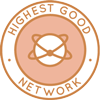 One Community designing human orchestrated eco-abundance through open source Highest Good Network® software that is a web-based application for collaboration, time tracking, and objective data collection. The purpose of the Highest Good Network is to provide software for internal operations and external cooperation. It is being designed for global use in support of the different countries and communities replicating the One Community sustainable village models and related components.
One Community designing human orchestrated eco-abundance through open source Highest Good Network® software that is a web-based application for collaboration, time tracking, and objective data collection. The purpose of the Highest Good Network is to provide software for internal operations and external cooperation. It is being designed for global use in support of the different countries and communities replicating the One Community sustainable village models and related components.
- Learn about our open source community collaboration and management software: The Highest Good Network
This week, the core team continued their work on the Highest Good Network PRs testing, confirming the fixed PRs and resolving several issues. The Fixed PRs included adding permission checks to disable relevant buttons in User Management (PR 2674), enabling auto-refresh after editing a team name (PR 2728), and fixing the team toggle (PR 2718). However, some issues remained unresolved, such as the Start Date issue in the Add Task modal (PR 2335) and the need to add a button for creating a new project instead of using the text input area above the search bar (PR 2694). They also provided details and a video for the scrollbar issue on the Team Management page (PR 2492). They logged two hours of tangible time in Week 2 for “CoreTeam TesterAgain” to test the Core Team email showing incorrect hours for the unique Core Team role (PR 958), including Week 1 results. Additionally, they recorded and reported a new bug regarding the Task End Date being earlier than the Start Date and another issue where clicking on the name of a WBS in the Projects section stops the timer and shows a popup message. Lastly, they reported a bug related to a white screen appearing when deleting a task. We continue to focus on designing human orchestrated eco-abundance through iterative improvements and user-centric solutions. See the Highest Good Society and Highest Good Network pages for more on how this relates to designing human orchestrated eco-abundance. The collage below shows some of their work.
ALPHA SOFTWARE DEVELOPMENT TEAM
The Alpha Team’s summary, covering their work on the Highest Good Network software was managed by Lin Khant Htel (Frontend Software Developer) and includes Anand Seshadri (Software Engineer), and Carlos Gomez (Full-Stack Software Developer). The Highest Good Network software is how we will manage and measure our processes for designing human orchestrated eco-abundance across our social architecture, construction, production, and maintenance processes. This week, Lin reviewed and approved PR #2761, becoming familiar with the codebase and running tests on his local machine, where all test cases passed. He also reviewed the weekly summaries, photos, and videos submitted by his Alpha team members. Carlos completed the Anniversary celebrated component by adapting the UI to match the Figma design, including creating the week-over-week comparison subtitle, Gmail icon, and implementing detailed styles and responsive views. He committed the final changes, created the frontend pull request #2772 and backend pull request #1128, and resolved conflicts with the development branch. Anand worked on resolving issues in the AddTask Modal related to his merged PR 2335. He tested three key issues: the timer stopping when navigating to the modal page, an inconsistency with the start date during form submission, and an error in the Controller Row addition logic when removing a task, all while designing human orchestrated eco-abundance in the background. Although the second issue persisted despite the implemented fix, he added comments to the report, and it has been reassigned to a developer. Additionally, Anand worked on unit test cases for the UserProfile, covering the display and functionality of the modal for editing user profile details and the image upload feature, which allows users to change their profile picture. See the Highest Good Society and Highest Good Network pages for more on how this relates to designing human orchestrated eco-abundance. View some of the team’s work in the collage below.
BINARY BRIGADE SOFTWARE DEVELOPMENT TEAM
The Binary Brigade Team’s summary overseeing advancements in the Highest Good Network software was managed by Vijay Anand Pandian (Full Stack Software Engineer) and includes Aaryaneil Nimbalkar (Software Developer), Abhinav Ankur (Software Engineer), Aditya Sure (Software Engineer), Anirudh Sampath Kumar (Software Developer), Ashmita Pandey (Software Engineer), Deepthi Kannan (Software Engineer), Huijie Liu (Software Engineer), Sai Venkatesh Voruganti (Volunteer Software Engineer), Sriram Seelamneni (Software Engineer), Vigneshwar Muriki (Software Engineer), Xiaolu Li (Software Engineer) and Ziyu Chu (Volunteer Software Engineer). The Highest Good Network software is how we’ll be managing and objectively measuring our process for designing human orchestrated eco-abundance through our social architecture, construction, production, and maintenance processes.
This week, Aaryaneil focused on merging two notification systems into a single codebase as part of the Highest Good Network project, ensuring smooth integration that supports the broader mission of designing human orchestrated eco-abundance. His work involved handling multiple pull requests and addressing issues from a previous pull request to streamline the code and enhance project functionality. Abhinav focused on validating the functionality of the `UserProfileEditContainer` component using React Testing Library. He developed test cases to ensure the component correctly interacts with the Redux store and accurately renders user profile information. The tests confirmed that the component rendered without errors and dispatched the appropriate actions, retrieving and displaying the expected user data. Aditya worked on software development tasks for the Highest Good Network project, focusing on merging two notification systems into a single codebase to simplify future implementation. He merged functions, handled multiple pull requests, and addressed issues from a previous pull request. These efforts were aimed at streamlining the code and improving the overall functionality of the project, ultimately contributing to designing human orchestrated eco-abundance. Anirudh worked on a bug from HGN Phase 2, conducting tests to ensure the issue was resolved. He contributed to multiple pull requests, conducting unit tests, reviewing code, and ensuring it adhered to coding standards to maintain high-quality code throughout the process. Ashmita addressed linting issues in the src/actions directory of the HighestGoodNetworkApp. Using ESLint, she reduced the number of errors and warnings across various files, improving overall code quality and readability. Deepthi resolved various UI and functionality issues, including adjusting the layout of the SEND EMAILS page, fixing alignment issues on the ‘Volunteer Agreement Confirmed’ checkbox, and addressing dropdown menu problems. She also improved the formatting of the Weekly Summaries submission page for better usability. Huijie modified the bar chart PR to address the requested changes and focused on developing the meeting scheduling feature. She implemented both the backend and frontend to enable users to schedule new meetings and ensured that meeting information are properly stored in the database. Additionally, she tested the popup errors during the creation of new users, contributing to the team’s goal of designing human orchestrated eco-abundance through efficient and effective code development.
Sai worked on improving the speed and functionality of deleting multiple blue squares in both the backend and frontend. He replaced the callback approach with async/await in the backend and simplified error handling. On the frontend, Sai consolidated props destructuring and moved formatting logic into JSX, reducing redundant conditions and improving code readability. Sriram made progress on fixing the user_id bug related to the dashboard page. He resolved an issue with the dashboard link in the header, ensuring it correctly displayed the current logged-in user’s dashboard. His efforts align with the team’s broader goal of designing human orchestrated eco-abundance. Sriram also began working on a new task to address the display of other users’ dashboards. Vigneshwar encountered an issue in his test case where the `projectReportViewData` function was failing due to a missing `wbs` state, leading to a TypeError. To resolve this, Vigneshwar modified the function using optional chaining and a fallback mechanism to handle missing or incomplete state data, ensuring the function returned an empty array if necessary. Vijay worked on resolving several issues within the HGN Software Development project. He focused on fixing a bug in the “Filter by Bio Status” feature in the weekly summaries report component (PR #5b99f051). Additionally, he investigated the root cause of a bug in the Team Members tasks component while consolidating and verifying the team’s weekly summary. Vijay also reviewed various pull requests, including updates to the info modal message (PR #2766), unit tests for `allProjectsReducer` (PR #2739), `UpdatePassword` component (PR #2732), and `PermissionsManagement` component (PR #2729). Xiaolu continued optimizing the app for Chrome and Firefox as part of the HGN Phase I Bugs and Needed Functionalities. She identified and attempted to resolve issues with the search button functionality and UI display problems in Firefox, although the problems remain unresolved and she has reached out for further assistance. Ziyu continued working on optimizing the app for Microsoft Edge. After comparing data fetching sections in both Edge and Chrome, she did not identify any compatibility issues. In the pursuit of creating a seamless user experience, the team is dedicated to designing human orchestrated eco-abundance, ensuring that technology harmonizes with user needs and environmental considerations. Ziyu also completed three pull request reviews, approving and commenting as needed to contribute to the overall development effort. See the Highest Good Society and Highest Good Network pages for more on how this relates to designing human orchestrated eco-abundance. View some of the team’s work in the collage below.
BLUE STEEL SOFTWARE DEVELOPMENT TEAM
The Blue Steel Team’s summary, presenting their work on the Highest Good Network software was managed by Jingyi Jia (Software Engineer, Team Manager), and includes Cillian Ren (Software Engineer) and Vishavdeep Kaur (Full stack Developer). The Highest Good Network software is how we’ll be managing and objectively measuring our process for designing human orchestrated eco-abundance through our social architecture, construction, production, and maintenance processes. This week, Cillian focused on enhancing the project deletion functionality within the Highest Good Network project, aiming to ensure the Projects page automatically refreshes when a project is deleted. His work included analyzing code segments to pinpoint the cause of update delays, troubleshooting, and making the necessary adjustments for instant updates. He also collaborated with team members to aid in refining user experience and project management processes. Meanwhile, Vishavdeep reviewed ten pull requests, including PR-2765, PR-2762, PR-2758, PR-2766, PR-2761, PR-2773, PR-2770, PR-2737, PR-2739, and PR-2738, ensuring each was up to project standards by providing detailed feedback, attaching screenshots and videos for clearer understanding, and approving them. Jingyi reviewed multiple pull requests such as PR#2780, PR#2748, PR#2736, PR#2696, and PR#2746. Alongside these reviews, Jingyi worked on refining the functionality to eliminate infinite reloading issues observed when adding new projects. After synchronizing with the development branch, Jingyi realized that the Safari browser inconsistencies had been resolved in another update. This led Jingyi to focus on fine-tuning the solutions to enhance the user interface’s responsiveness by addressing the persistent loading icon issue effectively. See the Highest Good Society and the Highest Good Network pages to learn more on how their work contributes to designing human orchestrated eco-abundance. See below to view images of their work.
CODE CRAFTERS SOFTWARE DEVELOPMENT TEAM
The Code Crafters Team’s summary, covering their work on the Highest Good Network software, was managed by Akilan Kumaran (Software Engineer) and includes Ambika Kabra (Software Engineer), Denish Kalariya (Software Engineer), Dhrumil Dhimantkumar Shah (Software Engineer), Muzammil Moahmmed (Software Engineer), Pavan Swaroop Lebakula (Software Engineer), Summit Kaushal (Backend Software Developer), and Swaroop Udgaonkar (Software Engineer). The Highest Good Network software is how we’ll manage and objectively measure our process for achieving human orchestrated eco-abundance through our social architecture, construction, production, and maintenance processes. This week Ambika addressed issues with the profile deactivation button, implementing a warning message when users are made inactive and removing a duplicate file. She also worked on permissions for the “Create New Badge” feature and prepared PR 2771 for review while debugging permission changes and implementing a cron job for user deactivation. Denish focused on phase 2 of a project, adding functionality to the dashboard and collaborating with Harsh on backend requirements involving MongoDB and Express. Dhurmil worked on unit test cases for Teams and faced technical challenges related to permissions, with support from Jae. Muzammil focused on resolving a color discrepancy bug in a pie chart on the Reports page and began working on a fix after reviewing past pull requests. Pavan worked on vertical space alignment issues in the task edit view, addressing feedback from Jae, and is making changes to the alignment of buttons and warning messages. Summit re-tested badge categories related to housing, food, and education, identifying bugs such as incorrect badge assignments and over-assignment issues, and shared his findings with Jae. He also tested team lead badges and other badge categories, identifying further issues. Swaroop continued work on PR #1016 and submitted PR #2784 for review, while also managing the team’s summaries and following up with members. See the Highest Good Society and Highest Good Network pages for more on how this relates to designing human orchestrated eco-abundance. The collage below shows some of this work.
DEV DYNASTY SOFTWARE DEVELOPMENT TEAM
The Dev Dynasty Team’s summary, covering their work on the Highest Good Network software, was managed by Harsh Bodgal (Software Engineer) and includes Ajay Kumar Reddy (Software Engineer), Crystal Low (Software Engineer), Howie Miao (Software Engineer), Jatin Agrawal (Software Engineer), Manikrishna Sanganabatla (Software Engineer), Mrinalini Raghavendran (Software Engineer), Nandini Yelmela (Software Engineer), Nikita Kolla (Full Stack Developer), Nishita Gudiniye (Software Engineer), Sailavanya Narthu (Software Engineer), and Shreya Vithala (Software Engineer). The Highest Good Network software is how we’ll manage and objectively measure our process for designing human orchestrated eco-abundance through our social architecture, construction, production, and maintenance processes. This week, Harsh worked on listing the requirements of the API VolunteerStats for Total Org Summary and explained them to Strallia and Denish. They also assisted Manikrishna with the Fix PDF Button in TotalOrgSummary by discussing its shortcomings and conducting research. Additionally, the user helped Faye with creating a pull request. Ajay managed previous pull requests on GitHub, addressing merge block issues by requesting changes from reviewers and updating instructions, all while designing human orchestrated eco-abundance to ensure a more sustainable and collaborative development environment. He also debugged a Date Mismatch Issue on the reports page, identifying a frontend code discrepancy affecting date display synchronization. Nikita developed React components for the Google Forms replacement, focusing on the Question Maker component and integrating Redux while enhancing styling and adding further form components. Mrinalini refined her work based on feedback, debugged local setup issues, and reviewed backend and frontend PRs, including #2714, #2700, #2705, and #2696. She initiated work on the ‘Application Page’ task, creating mockups using Figma and collaborating on design refinements, all contributing toward designing human orchestrated eco-abundance. Nishita addressed ESLint and Prettier setup issues related to Airbnb configuration and consulted team members to resolve errors. Sailavanya tackled a CI build issue causing a blank page due to an API token error, undergoing troubleshooting steps to pinpoint and address the root cause. Manikrishna implemented a SharePDF button for TotalOrgSummary, achieving basic functionality despite encountering testing challenges. Crystal completed hiding team member tasks based on visibility toggles and began implementing deactivated user visibility in the “last week” tab. Howie focused on resolving a system date bug by updating websocket configurations and considering alternative backend solutions. Jatin optimized loading time for the Total Team Report and began designing the schema for a Google Form feature. See the Highest Good Society and Highest Good Network pages for more on how this relates to designing human orchestrated eco-abundance. View some of the team’s work in the collage below.
![]() EXPRESSERS SOFTWARE DEVELOPMENT TEAM
EXPRESSERS SOFTWARE DEVELOPMENT TEAM
The Expressers Team’s summary, covering their work on the Highest Good Network software, was managed by Christy Guo (Software Engineer) and includes Faye Lyu (Software Engineer), Mohammad Abbas (Software Engineer), Rahul Trivedi (Software Developer), Reina Takahara (Software Developer), and Strallia Chao (Software Engineer). The Highest Good Network software is how we’ll manage and objectively measure our process for designing human orchestrated eco-abundance through our social architecture, construction, production, and maintenance processes. This week, Christy managed multiple unit tests, including testing subscription updates, validating inventory management, and ensuring accurate handling of user authorization and data integrity. Feya worked on improving code quality by configuring ESLint and Prettier. Mohammad dedicated 5 hours to the hour delay task, addressing timing issues with system updates, and another 5 hours on the badge hour display task, improving search functionality. Rahul concentrated on testing and verifying functionality across multiple pull requests to improve performance. Reina focused on making updates to both the backend and frontend. Strallia enhanced a line chart component and contributed to backend development. See the Highest Good Society and Highest Good Network pages for more on how this relates to designing human orchestrated eco-abundance. See the collage below to view the team’s work this week.
MOONFALL SOFTWARE DEVELOPMENT TEAM
The Moonfall Team’s summary, covering their work on the Highest Good Network software was managed by Anne Zhang (Software Engineer) and includes Calvin Liu (PR Team), Lu Wang (Software Engineer), Nikhil Giri (Software Engineer), Rishabh Nevatia (Software Engineer), Satya Shanthi Tadiparthi (Software Engineer), Saurabh Shetty (Software Engineer), Swathi Dharma Sankaran (Software Engineer), Tharunaa Shoban Babu (PR Team A-H), Vedant Gandhi (Software Engineer), and Yili Sun (Software Engineer). This week, Calvin focused on addressing Bug 16 in the Inventory Type List by updating the CheckTypes.jsx file to improve the table’s functionality and appearance. He made four key updates, including fixing the table header during scrolling, adding scroll functionality, improving styling with padding and alternating row colors, and introducing a hover effect. Nikhil has assigned as “Manager-in-training” on team Moonfall and worked on fixing the Project Report formatting by addressing CSS issues in the “Project member table” component. Also, he has pushed code changes to GitHub. Rishabh has worked on a feature from phase 2 of the application and completed the second part of its development. He has participated in ongoing discussions about designing the system for new functionality, specifically the approval process for the purchase order. , contributing to the team’s vision of designing human orchestrated eco-abundance. Satya has concentrated on testing pull requests related to unit testing and bug resolution across different components, such as ToggleSwitch, UserManagement, UpdatePassword, and PermissionsManagement. He has ensured that input validation and error handling were properly tested. Saurabh has worked on resolving a task related to the login form UI, which differed from the Phase 1 dashboard login page. Additionally, he has identified the need for further investigation to address layout discrepancies. He has submitted the issue for review. Swathi has made adjustments for proper alignment within a table and implemented a flexbox layout for resource icons. He has added a button to filter paused tasks. Tharunaa has completed ten pull request this week and covered a range of tasks like bug fixes, feature enhancements, and performance optimizations, which improved the project’s functionality and stability. Vedant has resolved a merge conflict on a previous pull request and attempted to fix a failing test case. He has began working on a new bug from phase 2, all while designing human orchestrated eco-abundance to ensure sustainable development within the project. Yili has addressed and fixed the issues in PR #2583 related to User Management UI problems. He has resolved merge conflicts, and fixed the Assign/Edit/Delete Blue Squares Permission issues, ensuring volunteers could manage Blue Squares correctly. See the Highest Good Society and Highest Good Network pages for more on how this relates to designing human orchestrated eco-abundance. Below is a collage for the team’s work.
LUCKY STAR SOFTWARE DEVELOPMENT TEAM
The Lucky Star Team’s summary, covering their work on the Highest Good Network software was managed by Anne Zhang (Software Engineer) and includes Chetan Sunku (Software Engineer), Gaurav Setty (Software Engineer), and Shefali Mittal (Volunteer Software Engineer). This week, Anne Zhang focused on ensuring that text backgrounds remain dark when hovering in dark mode, and previously adjusted the spacing between tasks and subtasks in light mode. She also managed the new team lucky star and reviewed materials submitted by group members. Chetan Sunku has revisited a past bug that had been resolved and merged but was found unresolved during a final check; after further analysis, he was able to solve the issue. Gaurav Setty has refined the Quick Setup Tool by implementing additional changes to APIs and integrated the removal of the “Save Changes” button for automatic updates. Their efforts exemplify a commitment to designing human orchestrated eco-abundance, ensuring a seamless and efficient user experience. He has restructured APIs for efficiency, and performed extensive testing to ensure functionality. Shefali Mittal has focused on refactoring unit test code for 16 files and reorganized them into the correct folder structure. She has added tests for various components, and submitted a pull request (PR 2783) with updates to the unit test excel. See the Highest Good Society and Highest Good Network pages for more on how this relates to designing human orchestrated eco-abundance. Below is a collage for the team’s work.
REACTONAUTS SOFTWARE DEVELOPMENT TEAM
The Reactonauts Team’s summary, covering their work on the Highest Good Network software, was managed by Changhao Li (Software Engineer). It included Aishwarya Ramesh (Software Engineer), Dhairya Mehta (Software Engineer), Haoyue Wen (Software Engineer), Gmon Kuzhiyanikkal (Software Engineer), Ishan Goel (Software Engineer), Jinxiong You (Software Developer), Khushi Jain (Software Engineer), Mohan Gadde (Software Engineer), Nikhil Pittala (Software Engineer), Peterson Rodrigues dos Santos (Full-Stack MERN Stack Developer), Rishitha Mamidala (Software Engineer), Saniya Farheen (Software Engineer), and Yash Agrawal (Software Engineer). The Highest Good Network software is designing human orchestrated eco-abundance across social architecture, construction, production, and maintenance processes.
This week, Aishwarya completed the showtrophyicon anniversaries functionality, implemented both frontend and backend logic, and resolved the trophy icon display function on the weekly report summaries page and API error issues. Changhao worked on unit test development, managed the software development team, and assisted the new team members with development-related issues. He checked the previous PRs and filtered out the unfinished parts on GitHub. Changhao also hosted the weekly team meeting to discuss progress and plans and created the weekly team folder for uploading photos and videos. Other tasks addressed include time log and task progress, assisting the team with development-related issues, and adding times to assigned tasks for teammates to keep working on unfinished work. The team’s efforts this week contribute to designing human orchestrated eco-abundance, ensuring both functionality and sustainability in their development processes.
Dhairya addressed the “Fix Projects find user function” task, identified the root cause affecting user discovery, and developed a sort and search function to optimize user assignment processes within the project section. Haoyue assisted the team leader with organizational tasks, resolved merge conflicts and deployment errors, adjusted pull requests based on reviewer feedback, and initiated research and planned the FAQ feature to enhance user support. Together, they contributed to designing human orchestrated eco-abundance by ensuring smoother collaboration and more efficient user support systems.
Gmon added active/inactive numbers by teams on the team page and created a new pull request branch titled Gmon-Active-NonActive-team. He completed his bio for publication on the main page but faced issues running the code, which crashed locally, and sought assistance from the group while trying to resolve the error. Gmon also organized relevant screenshots and a video to illustrate specific issues, uploading them to Dropbox for reference. Through his efforts, he is committed to designing human orchestrated eco-abundance in the project, ensuring that all functionalities align with sustainable practices.
Jinxiong identified and addressed bugs in the HGN Apps, particularly a freezing issue caused by an active button click and a layout change in the timer after accessing the “Reports” section. He also worked on the timer layout issue over the weekend. Ishan resolved high-priority bugs by reproducing matters on the local system and provided necessary comments and screenshots for pull requests on GitHub. He also submitted a weekly summary report and resized screenshots for Dropbox, all contributing to the overarching goal of designing human orchestrated eco-abundance.
Khushi tested and reviewed multiple pull requests related to bug fixes and UI enhancements, including the archived project list functionality, modifications to the title summary on the profile page, and fixes for the user list’s UI/UX issues. Khushi also developed a mockup design for the “Create New Position Setup Page”, with a focus on designing human orchestrated eco-abundance, enhancing user experience and system efficiency. Mohan improved the functionality of the Teams section, especially the “Delete Team” and “Assign Team” features under the Profile section. The current process required a manual save between deleting and adding a team, which slows down the workflow. The goal was to implement an auto-save function when deleting or adding a team, eliminating the need for a separate save action and making the process more efficient.
Nikhil completed 12 pull request reviews for both front-end and back-end tasks and unit testing to maintain the quality and performance of the application. Peterson resolved a new bug on the “User Management” page where a “Team Code” created during user setup would not appear correctly when viewing the user profile. Rishitha completed two medium-priority pull requests and fixed functionality for materials and tools purchase requests, updating the “Submit” button to “Purchase” and resolved critical bugs related to the display and functionality of purchase actions. The team remains dedicated to designing human orchestrated eco-abundance, ensuring that all features contribute to a harmonious and sustainable user experience.
Saniya modified the prompt behavior on the dashboard related to user actions but encountered an access issue for task assignments and planned to discuss it with her manager. Yash set up and completed the spreadsheet for actionable items related to the listing and bidding engine. The spreadsheet included vital information such as task descriptions, deadlines, responsibilities, and status updates. The tool provided a clear overview of the work needed for the listing and bidding engine, which will help track progress and ensure all necessary steps are taken. See the Highest Good Society and Highest Good Network pages for more information on how this relates to designing human orchestrated eco-abundance. See the collage below for the team’s work this week.
SKYE SOFTWARE DEVELOPMENT TEAM
The Skye Team’s summary covering their work on the Highest Good Network software was managed by Deepthi Arcot Subramanyam (Data Analyst) and Luis Arevalo (Software Engineer) and the team includes Angela Cheng (Full Stack Developer), Abi Liu (Software Developer), Laura Cohen (Software Engineer), Sai Preetham Dongari (Full Stack Developer), Snehal Dilip Patare (Software Engineer), and Yao Wang (Software Engineer). The Highest Good Network software supports designing human orchestrated eco-abundance, construction, production, and maintenance processes. This week, Luis finalized his pull request to implement email notifications when issuing a warning. After consulting with Jae and adding a dummy email for testing purposes, he submitted the code for review by others. He then began foundational work for creating a new warning, which will issue warnings when blue squares are cleared due to users not submitting a summary or logging sufficient hours. Luis identified the location of the relevant modal in the code, added two buttons, and considered options for state management. He also developed a plan to integrate the backend with the current function that modifies blue squares. Abi, worked focusing on creating a document outlining the necessary changes to the backend. He also spent time researching how to embed graphs within the body of an email. Laura continued reviewing the front-end code in HighestGoodNetwork to understand similar files and identify those needed for her feature implementation. Her task involves creating a confirmation modal that appears when changing a role for someone with custom role permissions differing from the new role permissions, all while designing human orchestrated eco-abundance to enhance user experience and functionality. She created a new component called “PermissionChangeModal” and outlined its skeleton and pseudocode, while also examining the back-end code in HGNRest to determine the necessary model properties. Angela worked on debugging backend code for the HGN Software Development project, where she encountered an “Unsupported Authentication” error, noting that only OAuth 1.0a User Context and OAuth 2.0 User Context were supported. After researching documentation related to OAuth 2.0 and exploring authentication methods, she used Postman to simulate the authorization process but faced challenges with different OAuth libraries. As a temporary solution, she hard-coded the app token and app secret into the .env file and plans to continue with the OAuth 1.0a approach. Yao researched the need for Google AI packages to update the Node version to 18 and explored generative AI tools for the “AI Write for Me” button. Yao also started a new task to create a feature that posts content from the HGN app to multiple social media platforms, for which he set up accounts on OnlyWire and LinkedIn for testing. Snehal addressed an issue related to toggling the username view in the user dashboard, identifying that the problem stemmed from the useState for displaying the user incorrectly toggling due to state for the user_id parameter. She modified the implementation, removing the use of useState for DisplayUserId, resolving the bug and ensuring the user_id displays correctly. She is now assessing potential impacts and plans to create a pull request by Saturday. Sai Preetham made progress on the archive/unarchive feature for projects, including improvements to state management that allow for better tracking of archived and active projects. This work contributes to designing human orchestrated eco-abundance by enhancing user experience and promoting seamless content sharing. He updated modal dialogs for user confirmation, added tests to ensure the feature functioned as expected, and raised pull requests for both frontend and backend changes. On the backend, controller updates were made to handle archiving and unarchiving, ensuring proper database updates. He also completed his weekly summary and managed files in Dropbox for organization and accessibility. The team’s efforts contribute to designing human orchestrated eco-abundance, showcasing their commitment to enhancing functionality while maintaining user-centric design principles. Below is the collage for the team’s work.
SOFTWARE PR REVIEW TEAM A-H
The PR Review Team’s summaries for team members’ names starting with A-H and covering their work on the Highest Good Network software was managed by Anoushka Hazari (Data Analyst). The Highest Good Network software is a foundation of what we’ll be using to measure our results for designing human orchestrated eco-abundance. This week’s active members of this team were: Abdelmounaim Lallouache (Software Developer), Ashish Nagraju (Software Engineer), Carl Bebli (Software Engineer), Lucy Xi (Software Engineer), and Geeta Matkar (Software Engineer). They reviewed all the Highest Good Network PRs (Pull Requests) shared in this week’s update. Learn more about how the Highest Good Network will measure and assist in designing human orchestrated eco-abundance in the Highest Good Network open source hub. The collage below shows a compilation of the work from this team.
SOFTWARE PR REVIEW TEAM I-N
The PR Review Team’s summary for team members’ names starting with I-N and covering their work on the Highest Good Network software was managed by Saumit Chinchkhandi (Administrative Assistant and Software Engineer). The Highest Good Network software is a foundation of what we’ll be using to measure our results of designing human orchestrated eco-abundance. This week’s active members of this team were: Kashish Desai (Software Engineer), Kurtis Ivey (Software Engineer), Nahiyan Ahmed (Full Stack Software Developer), Nanguan Lin (Software Engineer), Nathan Hoffman (Software Engineer), Navya Sri Ankireddy (Software Engineer), and Newell Yin (Software Engineer). They reviewed all the Highest Good Network PRs (Pull Requests) shared in this week’s update. Learn more about how the Highest Good Network measures and assists in designing human orchestrated eco-abundance in the Highest Good Network open source hub. The collage below shows a compilation of the work from this team.
SOFTWARE PR REVIEW TEAM R-Sa
The PR Review Team’s summary for team members’ names starting with R-Sa and covering their work on the Highest Good Network software was managed by Olawunmi “Ola” Ijisesan (Administrative and Management Support) and Mrudula Chavali (Administrative Assistant and Data Analyst). The Highest Good Network software is a foundation of what we’ll be using to measure our results of designing human orchestrated eco-abundance. This week’s active members of this team were: Pallavi Thorat (Software Engineer), Rachana Rizhkant Zha (Software Development Engineer), Sheetal Mangate (Software Engineer), Shaolei Long (Software Engineer), and Shreya Laheri (Software Developer). They reviewed all the Highest Good Network PRs (Pull Requests) shared in this week’s update. Learn more about how the Highest Good Network will measure and assist in designing human orchestrated eco-abundance in the Highest Good Network open source hub. The collage below shows a compilation of the work from this team.
SOFTWARE PR REVIEW TEAM Si-Z
The PR Review Team’s summary for team members’ names starting with Si-Z and covering their work on the Highest Good Network software was managed by Olawunmi “Ola” Ijisesan (Administrative and Management Support) and Samarth Urs (Administrative Assistant and Data Analyst). The Highest Good Network software is a foundation of what we’ll be using to measure our results of designing human orchestrated eco-abundance. This week’s active members of this team were: Neeharika Koniki (Software Engineer, Developer), Shivansh Nathani (Software Engineer), Vaibhavi Madhav Deshpande (Software Engineer), and Yiyun Tan (Software Engineer). They reviewed all the Highest Good Network PRs (Pull Requests) shared in this week’s update. Learn more about how the Highest Good Network will measure and assist in designing human orchestrated eco-abundance in the Highest Good Network open source hub. The collage below shows a compilation of the work from this team.
AND WE PRODUCED THIS WEEKLY UPDATES BLOG – CLICK HERE TO SUBSCRIBE
FOLLOW ONE COMMUNITY’S PROGRESS (click icons for our pages)
INVESTOR PAGES
GET INVOLVED
DONATE | WAYS ANYONE CAN HELP | MEMBERSHIP
CLICK HERE FOR ALL PAST UPDATES
 One Community
One Community

